#you read it through the lens of like cartoon logic
Text
Reading older comics like I love this, this is so dumb 😭 and reading modern comics like I hate this, this is so dumb 😒.
#golden/silver age comics are ridiculous/zany/fun#you read it through the lens of like cartoon logic#but that same feeling doesn't apply to modern comics (although waid managed to bring it in during his dick/kara date issue)#so everything in modern comics that is bad is just bad alskdja and doesn't have that cartoon logic excuse#do you know what i mean alskdja
612 notes
·
View notes
Text
Analysis: Lance Dur Webtoon Episode 5, The Third Death
(aka, Ronik's "let's try reading too much into some comics, and the Lance Dur series" challenge)
TW: Discussion of Child Abuse (physical, emotional, psychological), Filicide, Patricide, Child Neglect. Just the usual things that come up when talking about Lysmee, Agard, Lance Dur, Kerubim, God Ecaflip, and Joris, and their character parallels.
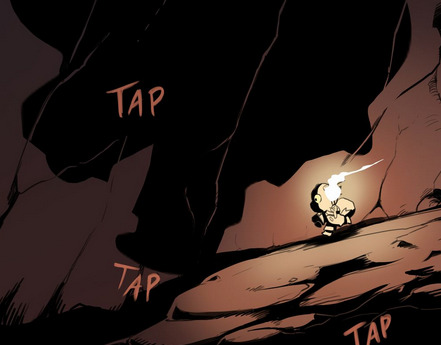
When looked at from the lens of symbolism and motifs, this comic is one of the more important pieces of Kerubim lore we have. And I really, really mean it. I need to talk about it.
But to talk about it... I will have to do something bad. Something I really wanted to put off for as long as I could:
THIS POST WILL SPOIL THE ENTIRETY OF THE LANCE DUR CARTOON, THE LANCE DUR WEBCOMIC, AS WELL AS THE CIRE MOMORE WEBCOMIC.
For this reason, I will be placing this analysis under a read more.
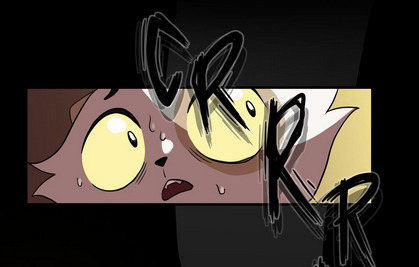
The thing that really gets me about this comic, is that it explicitly makes Kerubim a character foil/parallel for Agard and Lysmee.
Once or twice, I might have said things like, "Joris parallels Yugo, Atcham parallels Joris," and so on, — because of similar troubles, or character beats, — but let it be clear when I say "parallel" here, I don't mean conjecture, or correlations. What is happening here, is a bit... different.


Through his inclusion in this comic, and the role he takes in it as a victim of the Cire Momore curse, — the same way Agard was, — an explicit parallel is drawn between Kerubim and Agard.
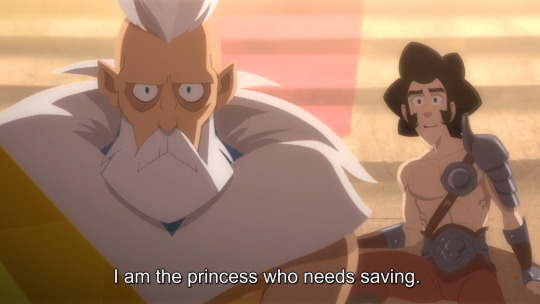
And, by that logic, between Kerubim and Lysmee as well, — for Agard is already her foil and parallel.
In a way, their being a trinity really enriches the way one can understand these characters, — they form a sliding scale, I think, — because for every mirror image they have, there is a small deviation.
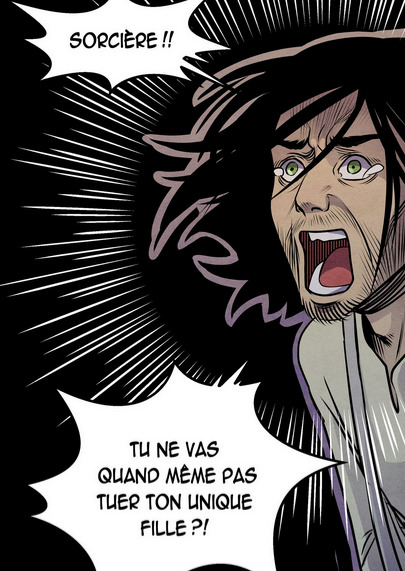


From Lance Dur's genuine love for his son and failure at showing it for all those years, and Ephedre's hatred of everything, to Ecaflip's godly "love" being both cruel and transactional.
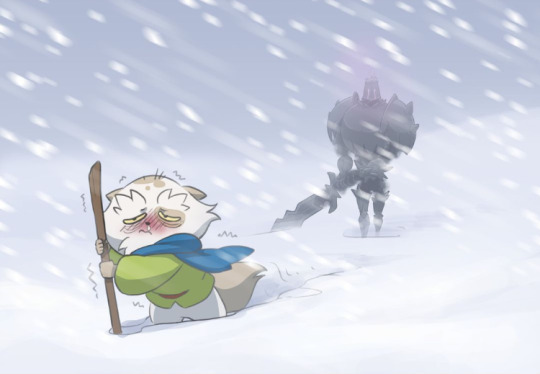
In a way, despite Cire Momore not actually picking victims in-universe, symbolically speaking, she is the unhealable, unbeatable wound of parental trauma, personified.
It's no wonder, her long-term targets, within canon, are Agard and Kerubim.

Something can have many different symbolic meanings in the same story. From the march of death, to the weight of parental trauma.
The past, with all the horrible things that happened in it, is as real as the future, and the ending it holds. And it's always coming for you.

Sometimes, they are actually two in the same. At least for Lysmee and Kerubim.
This is the level of parallels that Lysmee, Kerubim, and Agard operate on. Even though Kerubim being their parallel is only a minor thing, because Agard and Lysmee's stories are mostly intertwined between one another, it is still a good way to analyse things.
(I hope someone makes a similar post to mine, but mainly about Agard and Lysmee. I'm too much of a Kerubim fan to be talking about them...)
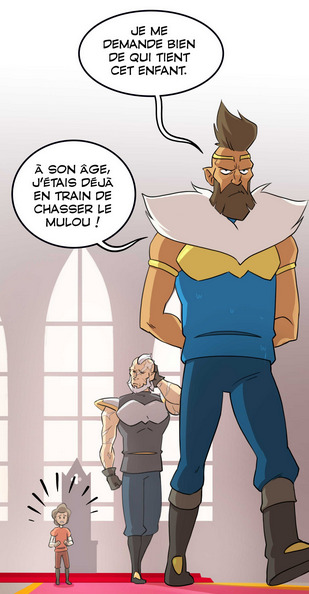

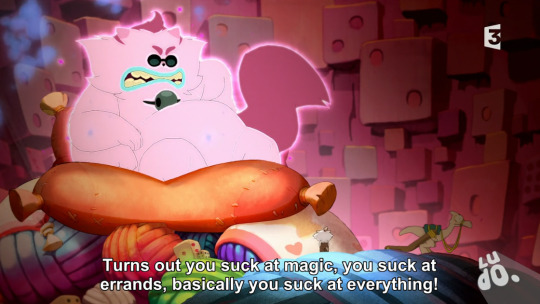
All three of them grew up with parents who weren't supportive of who they were as people. The onee person who was supposed to nurture them, treated them like an object at best (Agard, Kerubim), — or derived pleasure from their suffering at worst (Lysmee, Kerubim).
Between the two, Kerubim seems like the middle ground. Agard has a toxic, distant parent, Lysmee has a horrible, physically abusive mother, and Kerubim has a toxic, emotionally and psychologically abusive parent.
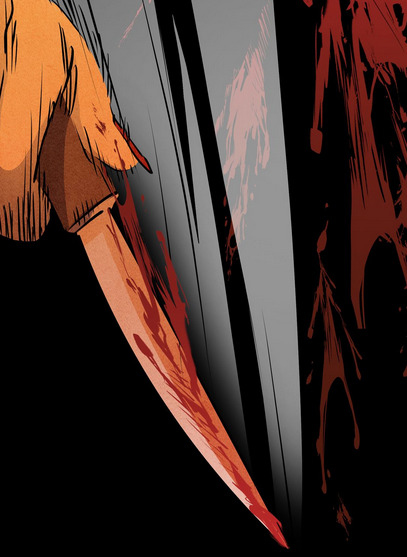


Their stories diverge, yet remain reflections of one another.
Lysmee dreams of breaking free, but is killed by her own mother in the end. Kerubim cannot die, or get rid of, his father. And Agard kills his father, — obtaining a tragic sort of freedom, an actual ending to their relationship.


Lysmee and Agard reflect one another with violence, with poison. They both plan their parents' death, but for different reasons, — a want to be free of abuse vs. a twisted way to show love.
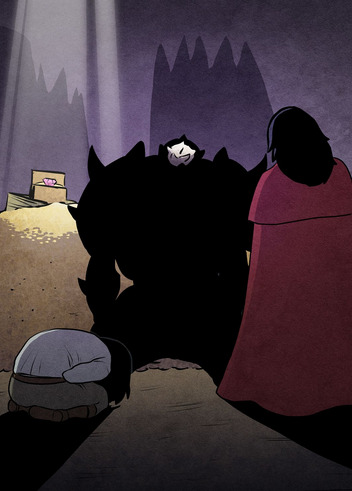

Kerubim and Lysmee reflect one another in inability to die or move on, — cursed to live forever by their parent, out of hatred, or out of love. But it differs, — for Kerubim, an eternal life, marred by death, by disease, is a pleasure, because he has his loved ones. But Lysmee... isn't living. She is suffering, forever.


Agard and Kerubim reflect one another by loving their fathers despite how bad things were, but having a way to move on, just a little, and try to be better fathers themselves, — separate from their toxic parent. But Kerubim will always have to look behind his back, to police his speech, to try and please Ecaflip, — because he is always watching, and he can always take all of Kerubim's freedoms back, at the snap of the fingers.

The way Kerubim experiences his haunting by Cire Momore is emblematic of his relationship with Ecaflip — everpresent, clouding over his thoughts, yet, if he focuses on moving forward, he can ignore it, if just for a bit.

The way it ends, is also a reflection of their relationship: only Ecaflip can choose, when, exactly, Kerubim stops suffering, — and he will keep him in danger, until Kerubim gives him what he wants.

Kerubim tries to free himself of the pain that his relationship with Ecaflip brings him by using fatherhood, but only ends up mirroring the dynamics that caused him pain. Joris wishes he could help him, but he is literally seven, and he has no idea how, — besides staying by his side, together, for eternity. Suffering from a very similar pain to Kerubim, but because of Kerubim himself.
Forcing himself to parent his own parent, to try and lead him from his pain.

Lysmee tries to free herself from the pain of her mother's abuse with romance, but the circumstances against them are far too strong, — Gustav can't even begin to help her. No matter how much he wishes he could. The only thing he could do for her is to die and be cursed together for eternity.

The same way Ecaflip is the only one who can save Kerubim, and the only one who could have saved Lysmee was Ephedre, the only one who can save Agard is Lance Dur, — because, as I had pointed out, all of them are the reason of their pain.

But the difference is that Lance Dur truly loves Agard. He might not have been the best father, he might have hurt him, but he loves Agard, enough to make sacrifices.
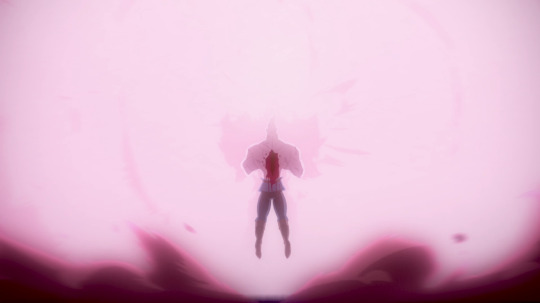
And if it took her mother's hate to doom her, it's quite poetic that it took a parent's love and determination that can finally set Lysmee free.
#lance5#ro liveblogs dofus#dofus#wakfu#krosmoz#kerubim crepin#Iance dur#cire momore#I CONNECTED THE DOTS I CONNECTED THEM
36 notes
·
View notes
Text
Kay Soul Eater fans, finally finished Fire Force
Between the shift in tone and the way they developed the characters, I'm still of the opinion Soul Eater > Fire Force.
But below the cut are my pros and cons for it as a lore prequel
Pros...
The concept of The Evangelist being driven mad by humanity's negative desires and that being the precurser to Asura. I liked the idea of Asura being a Fury driven made by conflicting ideals of justice, driven to fear his own father due to how humanity persieved him for my own fics. The Evangelist was just that, with elements of Asura's design in it, so I'm going to go ahead and say headcanon confirmed.
Arthur's hope and dellusions making Excalibur. Having a creature born from humanity's desire to do good and watch over the new world beginning to end was sweet. And also he was a crazy lil shit the whole time? Perfect.
The cyclical nature of the world. (I.E. the birth and deaths of new worlds being more symbolic of great change, rather than the actual end of the world). This lines up with a lot of anchient myths referenced in both series. Ragnarok's literally named after that concept (specifically the war of the gods). So to have that concept canonized and for SE to start at the beginning of another apocalyptic war where the very nature of the moon and stars changed with new gods awakening is good. Neat, love to see it.
Black Star seemingly being named after the Great Cataclysm. In SE he mentions his name meaning "returning to darkness" and kinda hating it. I found that odd since, clearly that's not what that phrase means in English. (Also, according to SEN, he chose to keep it). But seeing the black sun at the end of FF made it all click.
Witches and Shinigami-sama being two side of the same power. (Liking the concept here, not the execution).
Maka's parents reading to her abt this. You know that lil perfectionist enternalized the shit out of this story. (I'm also a sucker for lil kid designs)
Mid/Neutral
The heavy influence of the Bible on the world building and seeing how that's translated through a Japanese cultural/folklore lens. Interesting to see all that interact with Greek mythology. I was getting in my head abt doing that in my own fics on accident (s2g I'm not trying to make Black Star anime Moses, but now I'm wondering >_>) Always fun seeing how people on the outside interpret something you grew up with.
Kinda like the idea of 8 pillars. I would have rather there been more balance with what the pillars represented instead of an edgy version of Inside Out. It seemed more like a way to countdown toward the apocalypse as opposed to something sustainable in the world building, but I get the idea they were going for. Minus points for them not aligning with any of the Old Ones from SE.
Whimsy being the core part of SE. Like, yeah cartoon logic is abundant. Kind of a clever twist, but also a bummer it insinuates heroes would only exist in a cartoon world.
Animals having magic being different from witches with their own patron diety. Makes sense in the grand scheme of things, doesn't line up with LD thinking Blair was a witch then. LD, did you want Maka to fail the first time on purpose >_> I'd buy that tbh.
Cons
I've said this before, I'll say it again, no god of death??? The more research I do on shinigami, the more this seems like an oversight (they just kinda watch, they don't decide who lives or dies). So you have a god of creation, you have an other world/ afterlife, but no god charged with taking good souls to the other side. Humanity clearly wanted that, they had nuns to pray for it to happen, but that somehow hasn't manifested in the two iterations of the world we've seen? Also would have preferred seeing more than two Old Ones ngl.
Shinigami-sama being able to take godhood from someone. I get that you gotta reset the status quo, but... If he could do that, Asura shouldn't have been an issue. Especially since he's the one who gave him the power in the first place. Why didn't he pull and Aang?
The first witch being Kim with less agency and less control over her power, didn't love it. There's so many different ways they could have set up the catalyst of witches v shinigami. Like nature vs nuture or any other number of things would be more interesting than "catch me if you can". They have a whole realm and religion by the time of SE, there's no seed for that introduced at all.
Where are the werewolves? They supposedly had a whole clan of immortals. Everythings better with werewolves.
Honestly don't buy Rekka being granddaddy Star Clan. There's very little that ties him to the way of the assassin, or the aesthetic other than the eyes. Another missed opportunity.
Are dopplegangers still a thing? Kinda unclear on that one, considering how many were left walking around. This could just be me forgetting something that was said though.
More of a nitpick than a con, the translation I read Shinra said he "changed the value of a life" in order to bring his friends back. Implying death isn't as serious now? That just doesn't feel true given the wieght of character deaths in SE, Sid being the one exception. Just left me feeling a lil icky, didn't like it.
Claiming Kid was in anyway modeled after Shinra. I would have taken LD commenting on Soul looking like Shinra or Black Star acting like him, but Kid is the farthest from that character in every way. Once again, if he was going to do that, Asura was right there. (Also is it just me or did LD seem surprised Kid appeared??? Like humanity manifested him?)
5 notes
·
View notes
Text
Shōnen Anime Through The Feminist Lens
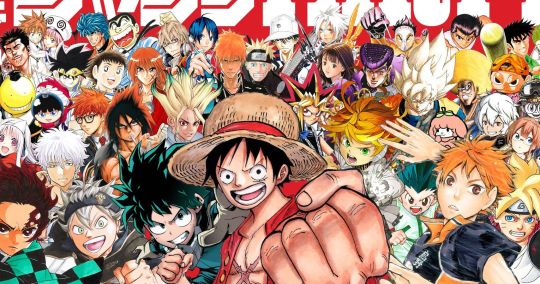
During quarantine, there has been a significant rise in the popularity of Anime; this wave of new fans brought back memories of when I first started exploring anime and how I came to love this media. Anime is a confusing word: In the western world, anime a separate genre of animated shows and movies from the typical western cartoons (ie. SpongeBob, Tom and Jerry, etc.) while in Japan, it refers to any animation in general. But for the sake of simplicity, I will refer to anime as a type of animated show or movie that uses signature aspects of Japanese-style animation.
Usually, a person is recommended mainstream shows from the shōnen genre when introduced to anime. Shōnen anime and manga are marketed towards boys between the ages of 12-18, but a lot of people outside of that demographic enjoy this genre as well. I find myself watching and recommending shōnen shows because of how exceptionally written the plot, the character development, and worldbuilding are. However, problems with female representation stem from the misconception that shōnen is only for boys or that girls don’t enjoy these types of stories. It is frustrating to see how little action and development female characters are given compared to their male counterparts and how often they are sexualized for the sake of comedic relief or fan service.

NARUTO and NARUTO SHIPPUDEN
The Naruto series follows the journey of Naruto Uzumaki as he achieves his dreams to be acknowledged by the village he lives in and become the Hokage (the leader of the village). It’s a story about saving the world, protecting your loved ones, and believing in yourself.
Almost every person who has watched more than 3 years of anime has seen Naruto; those who haven’t still can recognize characters, references, and general plot points. Yes, it is THAT popular. I knew about the show but, I put off this anime for so long because of the silly reason that Naruto was an annoying brat at the beginning of the series. It took me a few months to build up my courage to pick up the series again— and wow! I was glad I did! I restarted my journey about two months ago and, as of today, I have less than 50 episodes left to watch to finish the series (keep in mind that the complete series has about 700 episodes). I got attached to the characters for their development and their compelling stories. I saw Naruto grow from being a troublemaker to a dependable hero, watched Sasuke go down a dark path for the sake of revenge, and learned about Kakashi and Itachi’s heartbreaking childhoods. But the girls? Where are the girls?

As well written as the story is, girls in Naruto are viewed as support-type characters for the boys; their stories aren’t touched upon and remain the same throughout the series. The lack of development of the girls is best highlighted by Sakura— the main female character and the most hated person from the series, and dare I say, all of anime. At the beginning of the series, Naruto, Sasuke, and Sakura train together to become ninjas with their teacher, Kakashi. Sasuke was a prodigy and excelled in every task, Sakura was known for her intelligence and chakra control, and Naruto lacked skill yet impulsively charged headfirst towards his enemies. As the show went on, Naruto and Sasuke’s skills have grown on par as they continuously try to learn new powers to one-up the other. But Sakura stayed the same. Even though she gained super strength and trained to become a medical ninja under the Fifth Hokage, her abilities and progress are constantly shadowed by her teammates' flashy powers (look at the picture above). This gap is even more prominent after the time skip in Shippuden where she becomes a “damsel in distress” which annoyed a lot of fans. She had so much potential to become a great character. Even if she was not the strongest ninja, the show could have taken steps to make her valuable in some way even if all they did was make her an efficient support character to Naruto and Sasuke instead of making her seem like she is always in their way. The unbalance caused by the lack of active female roles in Naruto leaves the female audience unrepresented. The female characters' underdevelopment implied that the girls are incompetent and therefore don’t get to make an impact in the story.
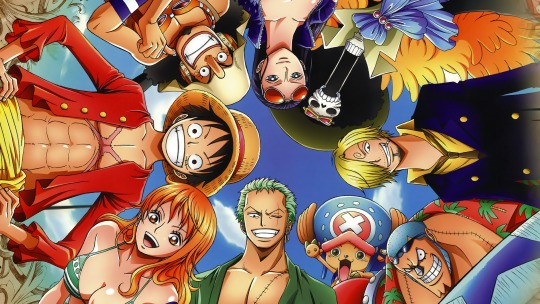
ONE PIECE
I can talk about this show for hours. With 950+ anime episodes and 1000+ manga chapters, One Piece is synonymous with art; it follows the story of Monkey D. Luffy and his crew, the Straw Hat Pirates, on an adventure to find One Piece. Unlike other shōnen stories, One Piece immerses the audience into a mysterious world that is complex, dynamic, and feels real. Every single character is well developed— each of them have insanely detailed backstories, memorable personalities, and compelling motivations making them feel human. The story also tackles unconventional topics such as slavery, racism, the justice system, and classism. I could go on and on listing reasons as to why I love One Piece or why it is worth catching up to the 950 episodes, but I feel like you should let One Piece in and find that out for yourself.
Unlike Naruto, women take on significant roles in One Piece and are often admired as role models. However, the lack of body diversity and the over-sexualization of the female characters leave a rather unpleasant aftertaste.
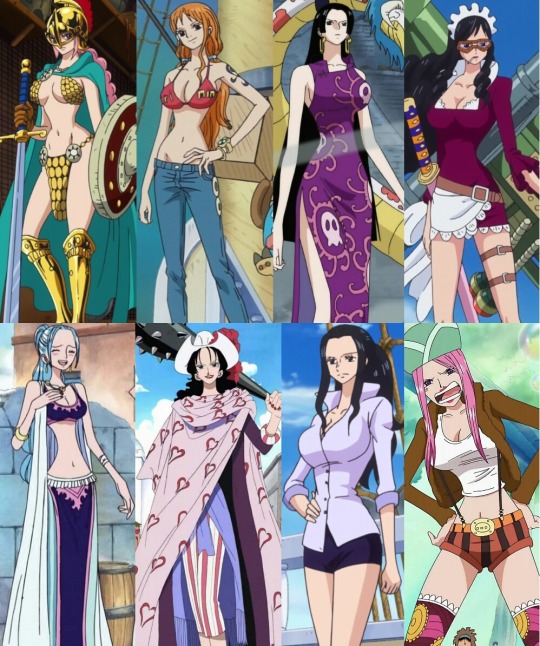
As seen above, they all suffer the same-body syndrome— large breasts, impossibly tiny waists, and skimpy clothing. I get that these are common types of fanservice but, there are plenty of questionable design choices whenever fanservice is prioritized over logic (ie. the top-left girl is supposed to be a gladiator but her outfit does the very opposite of protecting her as it leaves her vital areas exposed). Another issue I have is with Sanji and his behaviour around women. He is the prime example of what the internet would call a ‘simp’ where his perverse tendencies and chivalry clash whenever he is near a female character. I feel like his overprotectiveness toward women and his willingness to die for them is counterintuitive to the powerful portrayal of women in the story. I understand that fanservice isn't going anywhere but the girls’ unrealistic designs and their treatment dilute their complex characterization to mere pretty and delicate objects.
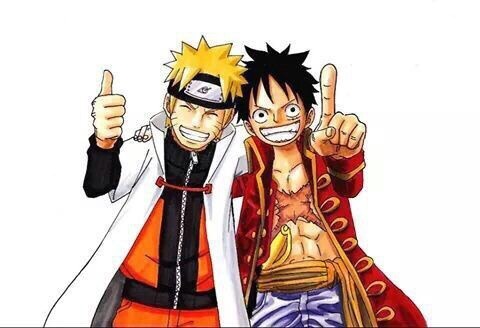
CONCLUSION
From a feminist point of view, Naruto and One Piece have their own shortcomings when it comes to the inclusion and depiction of girls. I particularly chose to talk about them because they are the central faces of the shōnen genre, both of them depict common issues with female representation in most shōnen stories. It is understandable to a certain extent as to why the authors chose to draw/develop their characters, however, the lack of active female characters in shōnen stories fuels the ” shōnen is for boys, therefore, don’t expect female representation” narrative. It would do no harm to write stronger and more complex female characters in these stories, in fact, it would make the stories much more interesting as there is variation in perspectives and experiences— especially now because of the strong societal push toward feminism and the growing female audience consuming anime media. The fact that shounen does target boys is perhaps the most important reason to feature complex, active female characters in these stories—not only as supportive figures or dream girls, but as someone they can relate to and look up to as well.
EXTRA: NEW GENERATION SHŌNEN!
Naruto and One Piece have been in the anime scene for decades, but as societal values shift, many New Generation Shōnen are trying to tackle the inclusion of feminism in their stories. Here are some:
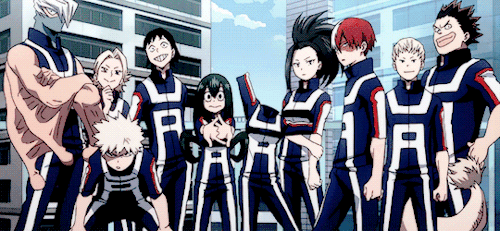
Boku no Hero Academia, one of the primary faces of New Gen Shōnen: A superheroes story where superpowers or quirks rule the world. Physical advantages male characters may have during fights is insignificant as the winner is decided by their ability to use their power at its full potential and their compatibility with the opponent’s quirk. Women are shown to have different body types, breaking the skinny hourglass stereotype with healthy and muscular bodies. Read more on how BNHA is breaking the moulds here: https://www.animefeminist.com/feature-hero-academia-confronts-shonen-sexism/

Mob Psycho 100: A supernatural shōnen where the main character, Mob, struggles with masculinity, battles for self-improvement, and desires to just be an amiable and helpful person. His story breaks the typical toxic masculinity tropes in shonen stories and instead focuses on Mob’s emotional journey to being comfortable with who he is. Read more about this here: https://www.animefeminist.com/anime-feminists-top-25-anime-of-the-decade/

Demon Slayer, another progressive main face of the New Gen Shōnen: A historical supernatural story where women are given major roles and are never looked down upon by their male counterparts. As demon slayers, their attire is unique to each individual yet fit for their job and is not compromised for the sake of fanservice.
- Leanne.
#anime#shonen anime#shonen#feminism#feminist lens#anime analysis#analysis#naruto#naruto shippuden#sakura#one piece#bnha#my hero academia#boku no academia#mob psycho 100#mob psycho#demon slayer#kimetsu no yaiba
22 notes
·
View notes
Text
Capsule Reviews April 2021
A few of the things that I've been reading over the past couple of months. I surprised myself when I noticed that most of these were indie books, but that's probably because all of my needs for big dumb superhero comics are currently being more or less covered by the material I'm reading for my podcast, Regarding Spawn. Anyway, here's some review.
Grenade by Will Kirkby
Grenade is in many ways an art showcase, a vibrant little volume centered on a world somewhat along the lines of Shadowrun, a cyberpunk setting with fantasy elements. The story focuses on a main character somewhat typical for the cyberpunk genre, a traumatized transhuman war veteran turned cop, haunted by their memories as they are drawn into a web of conspiracy tracing back to their wartime experiences. The story is hardly surprising, but this is a book that you read for the texture, not the plot. Grenade is gorgeous, jam packed with detail in the maximalist tradition of artists like Geoff Darrow but with an angular, punk edge, and the world building and concepts are all fun and have great hooks. There are certain ideas introduced at tossed aside that I wished to see a bit more of, but overall it's a very satisfying cyberpunk flavoured romp that would be well worth it for the art alone.
Home Time Vols. 1-2 by Campbell Whyte
Stand By Me by way of Over the Garden Wall, if put in reductive terms, I picked up the conclusion to Campbell Whyte's stellar first volume of the series and recently had the chance to read them back to back. They're excellent, maybe some of the best comics I've read this year, stellar YA material with a bold, experimental style and great storytelling. Centering on four friends about to graduate from middle school and go their separate way, the characters are suddenly caught up in a strange fantasy world with no way back home and the story focuses on how they cope with this as they gradually learn more about the world. The kids all feel like kids (or at least how I remember being a kid), the worldbuilding is really unique and off-kilter, fleshed out by loads of journal inserts ranging from photos to diary entries, to a handmade encyclopedia right out of Gravity Falls. The art is stellar, sticking to a general cartoon-y aesthetic but jumping back and forth through various styles of coloring and rendering with each viewpoint character, including sections rendered in a pixelated style which evokes a great deal of nostalgia for me as someone who grew up reading sprite-based webcomics. Some of the plot beats might not surprise you, but others probably will, and I can't recommend checking this out enough.
The Grot by Pat Grant
Another Australian book, not that I've been on a kick or anything. The Grot is quite excellent, a sort of "low post-apocalyptic" story set in a world littered with the detritus of our own. The world building is a treat, lived in and recognizably plausible but strange; cars and boats are powered by low wage laborers on pedals, electricity and running water are unheard of, cholera runs rampant, and anyone and everyone is partaking in an algae-based gold rush. The Grot is very much a gold rush story, and indeed about the biggest criticism I could make about it is that it could just as easily be set in any given historical gold rush with little effect on the narrative, the conceit of a post-lapsarian world is hardly taken advantage of, but then perhaps that's the point, "the more things change, the more they stay the same" and all that. The story itself is a classic one of ambition and confidence games, following two young brothers who arrive in a boom town with plans to be the only ones not getting suckered. The artwork and colors are vibrant and distinct, a loose, cartoonist's touch which nevertheless manages to make everything look distinctly real and absolutely filthy. Everyone is ugly and dirty, dressed in distinct clothes, cutting distinct profiles, looking real and alive, even if Grant doesn't pursue a photorealistic style. I'd recommend it for those looking for something different from the standard action oriented fair coming out from most major American publishers, but not sold on art comics. The Grot is a great read packed with story and personality.
Sazan and Comet Girl by Yuriko Akase
Coming out in 2018, right in the meat of Wife Guy culture, and preceding the rise of himbos by two years, Sazan and Comet Girl is a book well suited to the moment. It's about a nice, not entirely bright young man pursuing a Cool Girl across the stars as they fall in love. It's also, in fairness, Sazan and Manic Pixie Dream Girl in some ways, though it holds off the worst of that genre by characterizing Sazan primarily through the lens of sincere enthusiasm and support for his much cooler, more powerful love interest. It's a distinctly fun, peppy book, that's really gorgeously rendered, with full lush water colours on every page and a design sensibility firmly in line with retro-anime. It's not entirely without points to criticize, the titular Comet Girl spends the entire book rarely wearing more than bra and a pair of brave Daisy Dukes, and the trick employed throughout the final sequence of the book, which takes up the entire back half (the pacing is also a touch off) to get the whole universe cheering for the heroes is a little cheap. But overall Sazan and Comet Girl is really charming, it's cute, incredible to look at, just a little horny, and a fun adventure. I heartily recommend it.
PTSD by Guillaume Singelin
I'd had this sitting in my To-Read pile because I wanted to take some time between reading Grenade and this book, since there are quite a few superficial similarities between the two: they're both sci-fi adjacent, they both star traumatized veterans, both are lushly rendered by indie cartoonists, so reading them back to back would have felt like a disservice. For the record, they're ultimately not similar at all. PTSD is the story of Jun, a traumatized war veteran living on the streets of an unidentified city, pushing away all attempts at help or community as she slowly spirals downward, killing drug dealers to fuel her addiction to pain pills. One thing that stands out to me about PTSD tonally and about its main character is that it's willing to let Jun be really unpleasant in a meaningful way. Jun isn't an "asshole" because she's too much of a hard drinkin', hard fuckin' badass, she's an asshole because she's so deeply traumatized that she lashes out verbally and physically at anyone who comes near her. It feels unglamourous and real in a really enjoyable way.The art is also a revelation, it doesn't quite cross the line into Geoff-Darrow-insired visual maximalism, but every panel and ever inch of the pages are packed with lovingly rendered detail. Singelin's drawing style tends more towards cartooning than pseudo-realism, in a way that makes the charming moments utterly charming and the brutal moments appropriately shocking. I have some minor issues with the ending, the story kind of cuts out without really delving into the messy implications and the long tail to Jun's conflict with the drug dealers, and there's a touch of action movie logic in that the main character is alone among the veterans in her trauma having left her as a kind of towering badass rather than one of society's victims, but putting those aside PTSD is a really satisfying story about trauma and community.
1 note
·
View note
Text

Anon said: i totally feel the speech thing bc it’s like... how do i write a lisp without it coming off as fanfic-y?? but anyway 100% support you


Oooh that IS a good one! I personally don’t have an experience with a lisp, but one of my friends does, so I’ll do my best to answer, but if you want something way more indepth and more logical and not from an outsider? Go to @starsacrossthemultiverse. They’ve gotchu bb.
But I did a quick little research-y thing on it, and It seems to fall back onto three different techniques, all of which I dislike personally.
Option one: don’t.
I hate this method of viewing an issue like this through this lens, but alas, it seems to be most “writing forums” and “writing groups” number one fall back answer. They seem to come back to the “is there a purpose for this” thing that ya know a lot of white, cishet, neurotypical people fall back onto, where if there isn’t a reason for it, don’t do it. I hate that. There doesn’t have to be a reason beyond “they just do”.
Option two: replace “s”s with “Th”s and other letter replacements
Not the worst option, but can lean towards fan-ficy if you don’t keep it consistent. That’s the issue with writing things “fanficy”, it’s not exactly a cliche or bad, you just have to pay attention to what you’re doing. If the character lisps on “s” with a “th” sound but only at the beginning of words, does that make sense medically and realistically? Most lisps aren’t *just* at the beginning of a word, it’s throughout. So every single “S” that the person says would have to be replaced. This however can come across almost ‘cartoon’ like, in that it gets very hard to read and if you never address it as a lisp, it becomes mushy.
Letter replacements and writing out the dialogue can work wonders, and it can be amazing. Stephen King did it in IT, Harper Lee in to Kill a Mocking bird, and The Joy Luck Club by Amy Tan does something similar with a language barrier
Option three: Option one but like..... modified.
Some people have argued that you don’t have to write it out, and instead add it into the taglines of dialogue, so something like “X lisped out” or other variations. However, to me personally, this feels almost like a cop out mixed with a “I’m not gonna bother doing research into this.” However, it also does feel like the least offensive.
#HEY I'M HOME? || MAX ANSWERS;#--; anyway my best friend has a lisp and can probably help u more than what my lil answer does
2 notes
·
View notes
Text
A is for Amour || As We Find The Pieces (10)
Pairings: Slow burn Logicality, eventual Prinxiety (also bonus Cartoon Therapy Corne for this chapter!!)
Word Count: 4.9k
Chapter Summary: Chapter ten seems like the perfect time to set some friendly matchmaking into motion, wouldn't you agree? (Patton certainly might, if he didn't have so much respect for the fourth wall.)
Chapter Warnings: food, caps lock, alcoholism mention, neglectful parenting mention
<< First Chapter || < Previous Chapter || Read this chapter on AO3
***
"Patton. Patton. Paaaaaattonnnnn...”
The owner of the name in question barely blinked in acknowledgement of the beckoning voice; eyes seemingly fixated on an invisible point on the air, the only indication that he was alive at all was the movement of his jaw as he chewed thoughtfully on a handful of pretzel sticks.
“Patton? Hello? Foley!”
Moments after the last word, a tiny, greasy object launched across the table to smear against the lens of Patton’s glasses, jolting the boy back to reality at long last. “Huh? What?” Patton looked around in confusion, first at the french fry in his lap, then across the table at Sloane, whose arm was already rearing back to throw another. “Hey!”
Sloane grinned, triumphant. “There he is. Welcome back to the land of the living, ya goof.” The second fry bounced uselessly off the side of Patton’s head.
“What was that for? I’m already listening!”
“Just making sure.”
Next to Patton, Valerie shovelled a spoonful of chocolate pudding into her mouth before giving Patton a big grin. “So what had you so distracted there, Mister Plato?” she teased, poking the plastic spoon in Patton’s direction.
“Oh, you know… just thinking,” was the vague reply, delivered offhandedly as he glanced at the empty spot beside Sloane. Contrary to his previous protest, he still seemed distracted. “Where did Corbin go?”
“Bathroom, I think. Or maybe he just got tired of waiting for you to tell us what you were thinking about,” said Valerie, tossing any semblance of subtlety out the window with a raise of her brows. There was an expectant lull in the conversation as the two friends waited for Patton to fill them in. When it became clear that he wasn’t about to, she turned to Sloane with a roll of her eyes. “Guess we have to figure this out on our own. Hmm, let’s see. What new factors have entered Patton’s life recently that could be distracting him this much?”
Sloane caught the meaningful lilt in his feisty friend’s voice without missing a beat. “Well, I can think of at least one thing. One person, to be precise.” He tapped his chin with another fry, pretending to think hard. “What was his name again?”
“Leonard? Liam? Maybe Luke? Something with an L. Cute tutor guy, right? The one with the swoopy hair and —”
“And dreamy eyes —”
“Okay, alright, fine! Enough!” broke in Patton, red as a tomato. “First of all, his name is Logan, okay? Which I know you know — Sloane, he’s in the same grade as you, for crying out loud!”
Sloane, to his credit, at least had the decency to pretend to be sheepish, even if his best efforts couldn’t mask the impish gleam in his eye. The same could not be said of Valerie. “So you were thinking about him!” she said, triumphant. “Damn, I’m good.”
“Um, actually, no. For once.” The tips of his ears had begun reverting to their regular shade for a moment, but now the bright red glow returned, twice as strong as before. The words hanging on Patton’s lips couldn’t get out fast enough. “I mean, don’t get me wrong — I’ll be the first to admit that he does have just the cutest hair and eyes, and he’s super smart, which is obviously a plus, and it’s so adorable the way that he’s always adjusting his glasses and necktie as if they’re not already perfectly in line with the rest of his outfit — hey, speaking of, have you noticed how you never see him wear the same necktie twice? Where is he even getting those things from? D’you think he might have some kind of secret necktie stash or—?”
“Patton. Breathe.”
“Right, okay, sorry, I... yeah." Patton clamped his lips together as he sucked in a huge breath through his nose, grateful for the timely reminder. What were we talking about again?
“You’re still avoiding the question,” supplied Valerie. “Don’t think I didn’t notice. If it’s not thoughts of cute necktie tutor guy distracting you, then...?”
“Oh! Well, I don’t think I’ve mentioned this to you guys yet, but there’s this one really nice guy who works at the library where Logan and I meet up for our sessions. His name is Virgil. Super sweet guy, really cool nails.”
“Aha!” Valerie leaned forward. “So Logan’s getting some competition now, is that it?”
Patton laughed freely at that. “Oh, no — ha! — no way. He’s, like, twenty years old; pretty much the same as Roman, probably. No, we’re just friends. At least,” he added, furrowing his brow, “I think we’re friends. He seems pretty shy, though, and we’ve only really talked twice, so maybe he doesn’t actually consider me a friend yet?”
“Acquaintances, then.”
“Sure. Close acquaintances. Anyway, we were having a pretty nice chat while I was waiting for my mom to come pick me up from my session yesterday. He kind of fell asleep halfway through, but —”
“Back up,” Sloane interrupted, “fell asleep?” At Patton’s nod: “Sheesh, man. I thought you said he was this ‘super sweet person’.” He made little air quotes with his fingers as he spoke. “Checking out mid-chat doesn’t exactly scream sweetness. You’re sure you’re not just too nice to realize his true colours or whatever?”
“Wait, wait, wait, don’t jump to conclusions yet. I was just about to get to that. See, the poor guy had an absolutely exhausting day yesterday. He told me all about it after his, uh, energy crash. Because I invited him to, not because he just decided on his own to go ahead and dump his worries on me,” Patton added as he saw Sloane readying another protest. “But, see, here’s the thing: I don’t think that the whole streak of bad luck was the only reason for Virgil’s stormy mood yesterday. I mean, maybe I’m just overthinking, but both times I’ve talked to him so far, he’s just had this kind of… permanent tiredness. Not as in I-want-to-take-a-nap tired. This feels way deeper than that. Almost hollow.
“You should see the way Virgil carries himself. His shoulders are always curled in, for one, like if he makes himself smaller, the empty whateverness inside of him will get smaller too. And he keeps his hands really close to his chest when he’s not typing or knitting or something, like he always needs to be ready to shield himself from someone trying to reach in and tear that hole any larger. And he never smiles without ducking his head a little, as if...”
Noticing for the first time since he’d begun his strange monologue how blank his friends’ faces had grown, Patton trailed off sheepishly.
“You know what? Never mind,” he dismissed. “I didn’t mean for that to get so heavy. Sorry. Um, so yeah.” Patton shifted in his seat uncomfortably he continued while he turned to address Valerie, who was so lost that her eyes were fixed on a point above Patton’s head as she tried to understand.
“Patton, if I may…”
Oh, wait. So that’s what Valerie was staring at! Hearing the new voice join their conversation, Patton turned around with a delighted smile. “Corbin, you’re back!” he cheered, all thoughts of holes in chests disappearing to the back of his mind as he leapt to his feet to greet the new arrival.
“Oh my g— you’re just as bad as Sloane,” grumbled Corbin in response before sliding back into his spot next to his boyfriend. Contrary to the studious disinterest he’d been feigning at first, Corbin couldn’t resist giving Sloane a quick but affectionate smooch on the cheek. He waited until his arm was wrapped securely around his boyfriend’s shoulder before continuing, the sting of his words somewhat dampened by the way Sloane was already nestling into the crook of his arm, almost purring in contentment. “Seriously, do none of you have any chill? At all? I was gone for less than five minutes.”
“Sure, but I missed you!” Patton said with a pout.
“Looks like you didn’t miss my pretzel sticks,” shot back Corbin, gesturing to the now-empty container in the middle of the table. “That was basically full when I left!”
“Sorry, Corbin,” chorused the three friends, not sounding sorry in the slightest.
“Yeah, yeah, save it. Anyway,” continued Corbin, turning to Patton, “I couldn’t help but overhear your desperate plight.”
“He means he was eavesdropping.”
Corbin lifted an eyebrow at his boyfriend’s interruption. “It’s not eavesdropping if I would have been a part of the conversation in the first place anyway!”
“Mm, not how it works.”
“You shush or I’m taking this arm away.” Taking Sloane’s protesting whine as a sign of surrender, Corbin returned his attention to his cousin. “Patton, I totally get where you’re coming from. I think that this library guy just needs a friend.”
Patton’s forehead creased. “A friend? But I’ve already been trying to be his friend!”
“Yeah, but… look, obviously, it’s great that you’re already spending time with this guy —”
“Virgil.”
“— sure — spending time with Virgil after your sessions. Super thoughtful of you. But honestly, you know as well as I do that half an hour of small talk twice a week is hardly enough time to really get to know someone.” Corbin idly messed with Sloane’s hair as he spoke. “Not that I don’t think those half-hours are helping — I’m sure they are! I just… you said that he’s older than us, right?”
Still listening attentively, Patton nodded. “A few years.”
“Well, then, maybe you could try introducing him to someone else around the same age. Someone with a little more control over their own schedule than a high school student would have. Do you see what I’m getting at?”
“Uh… sure do.” Patton did not.
A fact which did not escape his cousin’s notice. Corbin exhaled. “Alright, here’s the thing. It’s not that I doubt your ability to befriend someone older than you. I know you, Patton, you could probably make friends with a rock if you put your mind to it. Actually, scratch that — you have made friends with a rock, haven’t you? Remember Percy and Pierre, your ‘twin’ pebbles from when you were in, what, grade two?”
In spite of himself, Patton laughed. He remembered, all right. “Pretty sure I might have paid more attention to the well-being of those rocks than I did to myself.”
“Okay, yeah, see? That’s my point exactly. You’re a really friendly, caring, all-around great guy — impossible not to like. But if I’ve learned anything from all those post-secondary preparation lectures they make you attend in twelfth grade, it’s that uni students’ schedules and high school ones don’t always mix; they might be busy in the mornings and evenings with classes and work, but have most of their afternoon open, or vice versa. It’s a mess.” Corbin shrugged. “Hey, if anyone could make a friendship thrive under those weird hours, it’s you. But I still think it might be a better idea to find someone who’s around the same age as this Virgil guy.”
While Patton thoughtfully processed his cousin’s suggestion, the table lapsed into comfortable silence for a spell. Across the table, Valerie finished the last of her chicken and rice. It was as she was screwing the lid back onto her thermos that a question appeared to hit her.
After a moment’s hesitation, Valerie had to give voice to her curiosity: “Hey, Corbin, it seems like you really know what you’re talking about. If it’s alright to ask, why is that? Are you speaking from experience, or...?”
She trailed off as both she and Patton noticed the worried expression Sloane now wore. He shifted on the cafeteria bench to glance up at Corbin. “You don’t have to share if you don’t want to,” he murmured.
“No, it’s fine.” Corbin punctuated his words with another bite of his apple, which he took his time chewing, carefully formulating his answer before swallowing to speak again: “When I first entered ninth grade — so, two years ago, you and Pat would’ve still been in seventh — I was... going through a bit of a rough patch. That was around the time my dad packed his stuff, and a few weeks later, my mother started to drink. A lot more than she should have, probably.
“Patton, you might remember that we weren’t at the family reunion that Christmas. That’s because neither of us were in any shape to go to a party; things had gotten really messy at home, to the point where I was skipping school almost every day to make sure she didn’t — uh, to take care of her.” Corbin rubbed the back of his neck with his free hand. “Long, long, long story short? First semester of high school was not a great time.”
Valerie blew out her cheeks. “That... sucks, Corbin. I’m sorry.”
“Yeah, well. Things got better.” Down came Corbin’s hand as he glanced at Sloane, whose head hadn’t moved from Corbin’s shoulder since he sat down. The moment his eyes fell on his boyfriend’s face, it was almost as if Patton could see his walls coming down, too. “And believe it or not, the improvement began in History class, of all possible places.”
“Our teacher’s seating plan put us next to each other.”
“I was trying to get some dramatic buildup going there, but… yeah, basically. My home situation was a little better by second semester, so I started coming to class more often. Sloane moved from Clivesdale right around the same time. As luck would have it, he wound up next to me for homeroom. The fresh transfer and the kid who never came to school. Probably the only thing we had in common besides a similar desk arrangement was the fact that neither of us had any friends, though not for lack of trying on Sloane’s part.”
“I baked cookies for everyone my second week there! Cookies, and no one besides Corbin even tried one!”
“Dang, so that’s how your whole love story began? Cookies?” quipped Valerie. “Those must’ve been some good baked goods.”
Corbin snorted. “No. I mean, yeah, they were good cookies, but it would have taken a tray a day to break through the angst-barriers shielding me from the rest of the world back then. No, it was that dumb A Moment in Time project. You know, the one where you and a partner have to prepare a full-length presentation to ‘transform the classroom’ and ‘take your peers back’ to a decade they assign you?”
Patton nodded. He remembered it well.
“Man, I have no idea where they come up with this stuff. Anyway, the point is, being the only ones in the class who had no pre-established connections with any other classmates, the two of us were kind of forced to partner up through process of elimination.” The last of Corbin’s apple slices gone, he paused to slide the container back into his lunchbox.
Sloane picked up the narrative where he’d left off: “I ended up inviting Corbin over to my house, I think about two days before the deadline? I told him it was to put some finishing touches on our Swing in the Roaring Twenties poster, but honestly, I just wanted to get to know him a little better.”
“We both knew it was an excuse—”
“He never suspected a thing.”
“I absolutely did.”
“Not a clue. Nada. There’s a reason they call me Sloane the slick.”
“No one calls you that,” insisted Corbin. “Besides, I knew all along. Our posters had been done for a week.”
Sloane gave Corbin a playful nudge. “Then why’d you agree to come, hmm?”
“I guess... because a part of me didn’t hate the idea of having a friend,” Corbin had to concede. “Actually, I’m not sure what I was expecting to get out of our little meeting, but a total mental breakdown at a near-stranger’s house definitely wasn’t it. Took both of us by surprise. I’m… still not entirely sure why it happened.”
Patton had his suspicions; he’d met Sloane’s mother before, and she was the epitome of sweet and affectionate. His voice softened. “Aw, Corbs.”
To his surprise, though, Corbin smiled. “There I was, a snivelling mess on the carpet of a guy who until then had been a friendly acquaintance at best, but instead of judging me or getting uncomfortable, Sloane just… sat with me. Listened. And eventually, gave me comfort when I was ready for it. That’s where this quote-’love story’ began, Valerie — having someone to lean on was so helpful in getting me through the rest of the year, and by the time my mom finally cleaned up her act, our relationship had long since moved from partners in History class to, well, partners in just about every other sense.”
“Corbin’s the best thing that’s ever happened to me,” Sloane added. “Man’s witty, sweet, and so easy to talk to it’s stupid. All I really wanted after transferring here was a casual friend or two. Corbin turned out to be way more than that; he’s been my rock. My loneliness-b-gone, know what I’m sayin’? Nothing can mess with my funky flow when he’s around.”
“Hey, Sloane?”
“Yeah?”
The corners of Corbin’s eyes crinkled affectionately. “That didn’t make any sense.”
***
By the third time the lead on the tip of his pencil snapped off, Patton could no longer ignore the voice in his head telling him to just give up for the night. He pushed his homework to the side and closed his eyes in a lazy attempt to calm the headache that had been steadily growing over the past half hour. This effort — if you could even call it that — proved futile; the image of the trigo-whatsit cosine graph he’d been staring at moments before was burned firmly in his mind’s eye. If he focused hard enough, he could even make out a colourful impression of the curvy lines faintly floating against the dark backdrop his eyelids provided.
Patton yawned, wishing he hadn’t left his math homework for last. Talk about not making sense.
The bizarre pseudo-graph starting to psych him out, Patton opened his eyes back up with a yawn. His gaze landed on something bright blue: the cat-eared case of his phone, lying face down on the other side of his little desk so as not to distract him from the homework he was supposed to be doing.
Fat lot of good that had done him. He’d been eyeing the thing all evening.
Try as he might, Patton couldn’t get his lunchtime conversation with his friends out of his mind. Corbin’s story in particular had given him a lot to think about regarding Virgil’s predicament, and it hadn’t been very long after when Patton realized he knew exactly what to do. The answer was blindingly obvious in hindsight, really.
Admittedly, he had yet to actually act upon his “master plan” — he’d been pushing the thing aside in favor of trying to make sense of his math work for most of the day. But now that Patton had, er, selflessly decided to sacrifice the completion of said work for the greater good, nothing was left to stand in his way.
Except possibly a lack of cooperation, but he could cross that bridge when he came to it.
After the briefest of internal debates, Patton’s hand reached out to make contact with something bright blue. Moments later, the brightness of a phone screen lit his features from below:
TheJollyJollyFoley (7:59pm): rooo
TheJollyJollyFoley (7:59pm): romannnn
TheJollyJollyFoley (7:59pm): roman my mannnnnnn
TheJollyJollyFoley (7:59pm): heyyyyyyyyyyyyyyyyyyyyyyyyyy
le-petty-prince (8:00pm): Sorry I was just watching the clock change from 7:59 to 8
le-petty-prince (8:00pm): What can I do for you pattington bear?
TheJollyJollyFoley (8:00pm): ooh new nickname :DDD
TheJollyJollyFoley (8:01pm): anyways i just wanted to ask a question for science reasons
le-petty-prince (8:01pm): Well that sounds completely normal and not at all suspicious even the slightest amount! Ask away, O Vaguely Cryptic One
TheJollyJollyFoley (8:02pm): you ever wish you had friends
le-petty-prince (8:02pm): ???
TheJollyJollyFoley (8:02pm): wait no that came out weird let me try again
TheJollyJollyFoley (8:03pm): “how would you like to add a new friend to to your already existing large roster of many cool and awesome friends” <<< pretend thats what i said the first time pls
TheJollyJollyFoley (8:07pm): u still there?
TheJollyJollyFoley (8:12pm): hello?
When a few more minutes of waiting yielded no response, Patton’s brow furrowed. What if he had accidentally offended his older brother?
Just as he was seriously starting to worry he’d blown it, though, his phone vibrated in his hands:
le-petty-prince (8:21pm): Sorry. Back. Monet says hi
le-petty-prince (8:21pm): Anyway!! Im intrigued!
With a sigh of relief, Patton tapped out his instinctive response:
TheJollyJollyFoley (8:21pm): hi intrigued im pat ;))
le-petty-prince (8:22pm): Funny
le-petty-prince (8:22pm): Now call me crazy but something tells me there was a little more than ordinary curiosity motivating this Friend Roster Expansion hypothetical
TheJollyJollyFoley (8:23pm): science reasons, roman, i told you
TheJollyJollyFoley (8:23pm): ..but yeah also another less sciencey thing
TheJollyJollyFoley (8:23pm): well i guess he could be sciencey? V was playing minesweeper last time we talked which seems like a smart-people kind of game but idk where exactly it would fall on the spectrum of scienciness
le-petty-prince (8:24pm): To be fair, its gotta take great courage to play minesweeper in public. Whoever this V person is, I deem them worthy of my respect
TheJollyJollyFoley (8:24pm): i assure you it was a very cool and respectable thing
le-petty-prince (8:24pm): In that case, I would be honoured to meet such an indisputably Cool Guy
TheJollyJollyFoley (8:25pm): !!! YESS
TheJollyJollyFoley (8:25pm): ok so i was thinking you and V could maybe meet up over coffee or something? theres this one really cute place that opened up recently, best cronuts youll ever taste <33
le-petty-prince (8:26pm): Ngl cronuts sound EXQUISITE right now
le-petty-prince (8:26pm): Why dont you send me their contact and I can try to schedule something, say next week?
TheJollyJollyFoley (8:26pm): ooh uh
TheJollyJollyFoley (8:27pm): thats the thing
TheJollyJollyFoley (8:27pm): i kind of dont really have any of V’s contact info BUT!! he works at the library so i’ll see him on friday and i can set up a time and place for you two then!!
le-petty-prince (8:28pm): Hmmhm
le-petty-prince (8:28pm): Funky circumstances but I trust your judgement! If you like V this much then Im sure he must be a real grand guy, I cannot wait to meet him!!!
le-petty-prince (8:29pm): Oh shoot sorry I need to go, Ive got a date to get ready for. Im super into this though so we can work out the details tomorrow, capiche?
TheJollyJollyFoley (8:29pm): caposh~
TheJollyJollyFoley (8:30pm): be safe!! dont have TOOOO much fun ;)))
le-petty-prince (8:33pm): Pfft. Bye dingus
***
“I just don’t get it!”
“Heard you the first time, bud,” quipped Valerie through a wry smile and a bite of celery. “You’re absolutely sure you didn’t… I don’t know, misinterpret something?”
“Yeah, I — no! Maybe?” Patton first tossed his phone onto the cafeteria table, then his hands into the air, frustrated. “I just don’t know why the sudden change in heart, Val. You know?”
“Who knows?”
“I know!”
“Okay, no. Press pause.” All eyes at the table turned to Corbin, who in turn was squinting through his glasses at Patton. “Guys, I’m barely following. Could you maybe explain what’s going on one more time?”
“Alright, you remember how I was telling you about Virgil yesterday? Lonely librarian guy? And you told everyone your and Sloane’s backstory and recommended I play friend-Cupid and all that jazz, right?” At Corbin’s nod: “Well, I tried it with Roman, and everything seemed to be going just peachy last night. He seemed really excited! But now all of a sudden… well, here.” Patton retrieved his phone to show his tablemates the messages. “Look.”
le-petty-prince (11:12am): As I was saying though: I do hate to rain on your parade but to be frank I think Im uhh
le-petty-prince (11:13am): Good? Friendwise I mean
le-petty-prince (11:13am): Real sweet of you to reach out though
TheJollyJollyFoley (11:13am): wait what? really??
le-petty-prince (11:14am): Sorry there are just so many complications
le-petty-prince (11:15am): Im unbelievably busy these days, for one
le-petty-prince (11:15am): So so busy
le-petty-prince (11:15am): Student life, man. Busy with college
le-petty-prince (11:15am): Essays and stuff
le-petty-prince (11:16am): Look frankly I hardly even get to see my other friends anymore, if I went through with this the chances are pretty good that Id meet him for cronuts or whatever this one time and then never find time to hang out with him again
le-petty-prince (11:16am): Which just seems boorish. It would probably do more harm than good for poor V frankly
The last text appeared as Patton’s friends were still reading; with a frown, Valerie handed Patton’s phone back to him. “He is acting kind of weird.”
“Right? I’ve got to get to the bottom of this.” Patton looked up at his friends apologetically. “Is it okay with you guys if I text at the table today?”
An indifferent shrug was his response. “Go nuts, man.”
TheJollyJollyFoley (11:17am): hey ro? can i be straight with you for a sec?
le-petty-prince (11:18am): Good luck with that
TheJollyJollyFoley (11:18am): -_-
TheJollyJollyFoley (11:18am): no points for the gay joke today, however tasteful it may have been. serious business here
TheJollyJollyFoley (11:18am): roman, what changed your mind really?
le-petty-prince (11:19am): Huh
le-petty-prince (11:19am): Wdym
le-petty-prince (11:19am): Didnt I just say? Haha
TheJollyJollyFoley (11:20am): mm i dont think you did
TheJollyJollyFoley (11:20am): you keep talking about “complications” and youre using the word “frankly” a lot and i know for a fact that you only ever use those words when youre hiding somethin
TheJollyJollyFoley (11:21am): nice try though!! but i did grow up in the same house as you did so im gonna need you to give it another go
le-petty-prince (11:22am): I dont know why youre being so weird about this pat
le-petty-prince (11:23am): I mean sheesh maybe I really am busy okay?
le-petty-prince (11:23am): And for the record that maybe is actually a resounding REALLY
le-petty-prince (11:23am): Look see I didnt even say anything to do with frankness that time! Absolutely zero traces of frank in this honest fellows messages right now
TheJollyJollyFoley (11:24am): -___-
le-petty-prince (11:24am): Frank? Whos that? Dont ask roman, he wouldnt be able to answer you!!
TheJollyJollyFoley (11:24am): -_______-
le-petty-prince (11:25am): Okay sorry youre right Im done
le-petty-prince (11:25am): Seriously though I dont understand how this warrants such a fuss? I just thought it over some more and realized it would actually be a bad idea to meet V for aforementioned reasons, et cetera et cetera. Why does that have to be such a big deal
TheJollyJollyFoley (11:26am): i…
TheJollyJollyFoley (11:26am): okay youre right i dont really know
TheJollyJollyFoley (11:26am): i guess this is just a really quick turnaround and it doesnt seem like something youd typically do??
TheJollyJollyFoley (11:27am): i mean you were all for it yesterday. you said, and i quote, “I cannot wait to meet him!!!”
TheJollyJollyFoley (11:27am): THREE exclamation marks and all!!!
TheJollyJollyFoley (11:28am): besides, maybe college is busy but theres no reason you should be any busier now than youve always been and
TheJollyJollyFoley (11:28am): whew. sorry for being pushy. i didnt mean to sound like i dont respect your choice, ig im disappointed is all :(
le-petty-prince (11:29am): No thats ok
le-petty-prince (11:30am): Ill tell you what. You said youd see V on friday right? And todays thursday.
TheJollyJollyFoley (11:30am): uh
TheJollyJollyFoley (11:30am): yeah..
le-petty-prince (11:31am): So hows this: Ill think it over some more during rehearsal this evening, and if I have another change of heart Ill get back to you tomorrow.
TheJollyJollyFoley (11:31am): !!!!!!!!
le-petty-prince (11:32am): Its still not a yes!!
le-petty-prince (11:32am): But… consider me solidly in Maybe territory.
le-petty-prince (11:32am): Capiche?
***
The majority of “tomorrow” had come and gone, and Patton still had yet to hear from his brother.
He’d been glued to his phone all day, checking his messages with a near-obsessive frequency in hopes that Roman might text him to say he’d come to his senses after all… but as Patton buckled into the passenger seat of his mother’s tan SUV on its way to the library, he had to admit the odds were getting pretty slim.
His mother, misinterpreting his solemn expression, shot him a quizzical glance out of the corner of her eye. “I thought you said the tutoring was going well.”
Before Patton could answer her, a quiet chime sounded from within his backpack — barely audible, but Patton’s ears had been piqued for it all day. Instantly, he scrambled to retrieve the bright blue source of the sound, perking up as he saw the screen was already illuminated. As Patton read over the contents of the notification, a wide grin spread across his face.
“Yeah,” Patton said out loud, addressing his mother with his words even as his fingers were already moving to type out a reply to someone else. “Tutoring’s great.”
le-petty-prince (3:44pm): Ah, what the hell. Im in.
***
A/N: me, rushing in more than a month late, starbucks cup in one hand and this update in the other: HEY GUYS DONT FORGET TO LIKE COMMENT AND RING TH -- wait where did everyone go
for real though, i'm so so sorry about how long this mediocre chapter took to go up!! this was the first chapter that i HADN'T finished the rough draft stage of during nanowrimo, and i huuuugely underestimated how long the unfinished portion would turn out to be. couple that with this weird writer's block that's been following me around wherever i go for a little over three months, and, well... you'll end up with this ^^; thank you so much for sticking with me though, and i hope it was at least semi-worth the wait?
[next chapter]
General: @surleytemple @starryfirefliesbloggo @icecoldparadise @lyditist @fandom-random2405 @beach-fan @ihateitwhenyourejustvague @starryeyedhomicide @unring-this-bell @flix-net @pheonix-inside @thelowlysatsuma @residentanchor @sanderstalker @kazykazu @theres-no-winning-on-christmas @fandersfic-patton @fandersfic-roman @fandersfic-logicality @fandersfic-prinxiety
AAmour: @romanticsanders @thatrandomautist @mirror2thespirit @pokii-jonas @basicmillennial @starlitparfait @littleladynightshade @insert--self--hatred @psychixx @damien-furlong
#sanders sides#logicality#prinxiety#ts patton#ts roman#ts logan#ts virgil#spec made something#spectral scribbles#a is for amour#aamour#cartoon therapy#ts sloane#ts corbin#corne#caps lock tw#alcoholism tw#neglect tw#food tw
15 notes
·
View notes
Text
Just Fiction (and When It’s Not)
I’ve been tying myself in mental knots for the last while about the “It’s Just Fiction” argument. At this point I’ve heard a lot from both sides that’s actually pretty valid, leading to a lot of general confusion.
The conclusion that I’ve come to, though, is that “It’s Just Fiction” is not a universal defense, and its meaning shifts drastically when it’s shifted out of the originally intended lens.
I propose that there are three lenses through which the “It’s Just Fiction” argument can be viewed: in-universe, authorial intent, and public interpretation.
Before jumping into the analysis, I should note that there are a few assumptions here:
The fiction in question is actually fiction, and does not resemble any real life persons, living or dead in an identifiable capacity. Therefore, things like the Ted Bundy Case Files are immediately disqualified.
We are assuming innocence until proven guilty.
The In-Universe Lens
The “It’s Just Fiction” defense is most often applied to in-universe logic, and is related to the suspension of disbelief--the mechanism by which we can ignore our comparisons to the real world and immerse ourselves in a fantasy.
When you say "It's Just Fiction" about in-universe logic, it understands very clearly that fiction is fake, and that the characters and events do not exist in the real world. It may echo real life, and real people might to replicate it, but no matter how dark or gross or fluffy or fantastical the content, no matter how gritty and “realistic” it is, it is not real.
Arguing that "It’s Just Fiction" is basically stating that you understand how to separate reality from fantasy, and treat characters and in-canon logic as the mechanisms by which an interesting story is told. While they may feel real, especially if you have a special connection with them, they fundamentally are not.
As a result, content creators are generally allowed to use it as space to explore taboo topics and search for relationships and meaning in places that no sane person would enact in real life.
However, this is not free reign to create whatever you want, and expect no consequences, as we will get to in our next point.
Authorial Intent
As stated earlier, the general assumption here is that the content creator did not intentionally have ill will towards anybody. Unfortunately, there have been too many case where this has proven to be bad faith. As a result, how to approach this aspect of the “It’s Just Fiction” argument is very difficult and controversial, because sometimes it is very difficult to “prove,” especially since the creative process is often multi-faceted as content creators draw from multiple inspirational and motivational sources.
Oftentimes, content creators are young, ignorant, and lacking self-awareness. This leads to them not knowing how to take critique, especially if they are approached in a harsh, critical manner, and generally only alienates them in a way that stifles their desire to learn and grow naturally. It is generally not your job to educate strangers on the internet, either, since there are often trolls who disguise actual ill intent as ignorance.
The most surefire way to address this is to curate your own internet experience by blocking liberally those whose content you do not wish to see.
There is another case, though, that needs to be discussed: that of predatory content creators. These people usually straddle the line between “a distasteful lack of mindfulness” and “preying on vulnerable populations.”
Accusations of ped/o/phil/ia against any individual are serious, and in process you have to consider a personal history of predatory behavior, rather than applying a blanket "if it's dark and taboo topics, then it automatically implicates the author as a pervert.”
You can usually identify these individuals based on the content’s tone and approach--that they aren't approaching a taboo topic for the sake of literary exploration, but because they are self-inserting themselves. There are heavy implications about people who self-insert into that sort of fiction, such as people who write or draw cartoon character CP, and you can usually tell on a case-by-case basis whether or not somebody is hiding a gross perversion behind "It’s Just Fiction.”
Public Interpretation
Public interpretation is usually where the “It’s Just Fiction” argument breaks down entirely, because we are no longer working directly with the work (in-universe) or the people immediately responsible for its creation (authorial intent). Public reactions are very, very real and need to be treated as such--but first, you have to consider the likelihood that a work of fiction will actually contribute to swaying that public.
The argument here is “even if the person didn’t mean any harm, that doesn’t mean that they shouldn’t be held responsible.” And this is another tough one, because on one hand, yes, content creators ideally should exercise mindfulness about how their work will be received and interpreted. On the other hand, the public is beyond the control of any single individual, and things can easily be taken out of context or snowball out of their control, regardless of their intent.
So, for the sake of this particular case, we have determined that the author did not mean to cause harm, the next question is how much harm is being done.
In other words, who exactly is the public, and how many of them are there?
For instance, a bunch of kids filming a shitty monster movie featuring sharks may have the exact same messages as Jaws (sharks are evil and need to be killed). Neither one of them intend to do real sharks any harm; however, the one that needs to be held responsible is Jaws, not the shitty indie film.
Why? Because Jaws was a box-office success that became a cultural phenomenon. It impacted the opinions of the millions of people, leading to a sharp increase of shark hunting.
Yeah, the indie film was equally bad in the messages it was conveying, but it just fades into obscurity without actually doing any harm.
It’s the same spiel with fandom works. Because fandoms are insular spaces, they feel a lot bigger than they actually are. That’s why fan-content creators are not held to the same standards as mainstream content creators, because the public they actually affect is actually quite small.
When people say “It’s Just Fiction” in relation to content that is not intended to do harm, but is controversial in content, what they’re really saying is “fandom is a small, in-bred pocket of the internet, and and because it is not written by somebody intending to cause harm and will never likely see the public eye, the damage that it does is negligible, and any energy that you put into causing an outcry over it is merely a petty waste of time.”
At which point, again, the best course of action is to just block what you don’t want to see.
Applications
This is a long read, and the basic point is to exercise your own critical thinking skills. My general rubric for what I keep versus what I block is:
Is the content actually fictional.
Is the content creator acting out of a desire to hurt others?
If the harm is unintentional, how many people are affected, and how wide-spread is the damage?
Let’s Practice
Case 1
Person A is obsessed with a villainous character from an anime.
They know that the character is completely made up.
They have no desire to hurt other people, since this affection for a fictional character is literally just them. Their actions do not pose a threat to vulnerable groups.
The number of people even directly aware of Person A’s special interest is pretty small, and if you’re squicked out by it they’re an easy block.
Therefore, by this rubric, “It’s Just Fiction” works just fine as an explanation for their actions.
Case 2
Person B’s fanfic reduces your favorite character to LGBT+ stereotypes. The tone of the fic, though, is fluffy and light-hearted.
Again, this is entirely fictional and all parties know it.
It’s difficult to gauge whether this was done intentionally or not; sometimes a quick chat with the author will clear things up; otherwise, the tone of the fic and the lack of mean spirit in any of their other works, so it’s probably unintentional. It’s probably safe to give the benefit of the doubt.
The general readership on the fic and the number of kudos is pretty low, which means that it’s not getting much attention anyways. It was distasteful, it made you feel gross when you read it, but overall the damage is pretty contained.
Therefore, by this rubric, “It’s Just Fiction” still generally works, because of the limited number of people even aware of the fic’s existence.
Case 3
Person C made an AU with characters aged-up from the canon, and there are some N/S/F/W scenes or jokes!
AU = fictional
This is a tricky one sometimes, because there are absolutely people who age up characters just to “legally” draw them in N/S/F/W situations.
However, there is a difference between people who do that, and others who say, project out an entire timeline full of unique character interactions and are looking to explore the various aspects of adult life, which sometimes involves consensual sex. The authorial intent here is usually pretty easy to pick up on, because a well thought-out aged-up AU often takes a lot of mindfulness on the part of the creator.
Again, things limited to fandom spaces are by default pretty small in the public that they reach.
“It’s Just Fiction” absolutely applies here because of the amount of work that has been put into it to create an adult version of the world and characters, and it’s clear that the intent was not to expose minors for the entertainment of perverts.
tl;dr: If you’re going to treat fandom with academic scrutiny, please apply critical thinking to situations as they come. “It’s Just Fiction” does not work as a general statement because it wasn’t originally meant to be a general statement.
535 notes
·
View notes
Text
Spirit
Heyo!
I hosted a poll last week on the contents of this post and “Concepts & Inspirations” won over “Medium & Craft”! I will do both, this just determined which one I would do first. I got caught up in some tasks and commission work so I'll try and give you a comprehensive summary of the things I consider when diving into new work.
I would say it's fair to start from the beginning, which would be Western. Before this point (aka. Elementary & highschool) I was mostly interested in drawing fantasy and cartoons, which can be the case for any kid who loves to draw what they love. As I mentioned in a previous post, I loved drawing dragons. When it came to secondary-education, they wanted me to think about it more. Fantasy still supplied most of my work, even though they tried to beat it out of me, which is probably why I wasn't cut for fine art at the time. I found solace when I learned about Romanticism.
If you're unfamiliar with the movement, it was the time during the Industrial Revolution when artists started rejecting classical values and the mechanical (logic & machine) in favour of the spirit that exists within ourselves and the landscape (emotion & the world). It wasn't necessarily regressive in nature, they just found the path of progress not without its consequences. I think I summarized it well enough in a document I made in my final year at Sheridan, and I'll highlight some keywords as we go:
“Ever since I was first introduced to the Romantic movement over a decade ago, I still believe the best way to describe their motive as thus: to evoke a “stirring of the heart”.
"The artists during this time, late 18th to mid-19th century, had a preoccupation with valuing emotion over logic. Social and political conflicts urged artists to respond through their work and elicit a stronger response from the public. Landscape painters sought the picturesque and used the landscape as a vessel for allegory: a union between soul and the natural world. Sometimes the presence of people was only noted by their memory in the form of architectural ruin. Romantics tried to harness a more spiritual energy to charge their work, which many of them did when they reacted to the world of their time. Many of these artists referred to the writings of Edmund Burke, who described the various relationships of beauty and the sublime.
"The Sublime is an experience caused by something that inspires both awe and terror. Burke theorized the various traits that contribute to this feeling, many of which Romantic artists utilized in their paintings. Such characteristics include magnitude, sensory intensity, and the degree of danger it presents the viewer. This presented threat held at a distance sparks pleasure in the guise of “survival”. A painting can house dark and terrible things, yet be composed in stunning, breathtaking scenes that dwarf and humble the viewer.
"Romantic artists and theorists like Burke wished to issue a warning to humanity, that in forgetting our spirituality and our relationship with the landscape, we deprive ourselves of an enlightenment that only the sublime can help us obtain. This mixture of awe and terror, of hope and despair, allows artists and viewers alike the chance to experience serenity on a level that logic could never offer.”
When it came to Burke's writing I was only ever interested in what constituted the Sublime. I don't much care for his outlook on women but I remind myself that it was a different time. If you'd like to look up his work it's now public domain and you can read it online here:
https://archive.org/details/enqphilosophical00burkrich/mode/2up
What does this all mean to me, then. Well I'm a very emotional person, so emotional to the point I can't go without destroying myself. Rarely do I express anger interpersonally because the intensity of it is too much for the regular person. Sometimes I wonder to myself if its a form of emotional immaturity, but I feel I would be much too apathetic otherwise. I am aware of what is both beautiful and ugly in this world, and I am not consumed in the game of life to cope with it. When I draw monsters, death or ruin, it really isn't a matter of what's conventionally good or bad. It can be both. This is my way of coping, of reflection.
When I pair that with fantasy, I feel even more fulfilled. Imagine that my body is a lens, and when the world we know passes through me, it becomes magnified and transformed. I remember having a talk with a friend once; fantasy worldbuilding is the most successful when it's believable. From the outside eye, my world might not look it, but it contains many of the building blocks of reality. Sometimes their forms are so raw that they're not immediately recognizable. It's also ever-shifting, which can be daunting to many and even to myself sometimes. Soul and emotion govern it all, so I can't have much say in the matter.
How sickeningly poetic eh? I never considered myself a romantic in the traditional sense but this sort of begs the question. I can't tell you if I'd be a model example of a Neo-Romanticist either. Maybe if it's an umbrella term... I guess I'll know by the end of my lifespan.
I thiiiiiiiiink that should be it for today. I've been esoteric enough for the week. Yet it's just one segment of my concepts, oh boy! Tune in next week and I'll talk about narrative.
Looks like Medium's gonna have to wait a couple weeks, oops!
Take care,
Gosia
2 notes
·
View notes
Text
Deconstructing the 2017 Movie Trailer Mashup
Why deconstructing a mashup? Because these videos are often perceived as a random mess of pretty images from movie trailers. While that’s absolutely true, there’s an opportunity to explore themes and also pay a few obscure tributes to elements that don’t belong in the video itself but that are generally widespread within pop culture. These montages have been going on for a few years now, and it’s hard to edit the footage in a way that won’t feel reminiscent of one of the many great retrospectives put out by other talented editors in years past. I have to say that trying to build a narrative with all that footage has now become more enticing to me than to highlight the moments that made the year in cinema within their proper context. Let’s get right into it, shall we?

Someone on Reddit commented: “starting off with GEOSTORM, that’s a bold move!” and it didn’t even cross my mind. The shot was exactly where I wanted to go right off the bat - a blend of childlike wonder and eerie caution reminiscent of earlier Tim Burton films. The track was composed for a television spot called “A Wonderful Day” from IT and it showcases major Danny Elfman influences. Thus, this was my small tribute to the Burton/Elfman collabs happening under snowfalls like EDWARD SCISSORHANDS or BATMAN RETURNS. I loved the contrast in dialogue from PERSONAL SHOPPER which was such an under-appreciated indie film this year. Every mashup has its horror section, but I am gently sneaking you in by the supernatural door this time around. It’s just innocent enough to deceive those who hate horror.
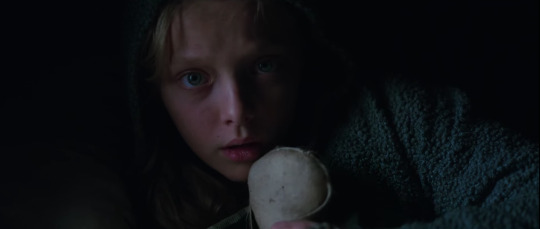
Childlike wonder flawlessly captured in one shot, from the lens of Matt Reeves. I can’t say I connect emotionally with his APES movies, but the quality control on every frame, CGI or otherwise, it pretty much above and beyond all industry standards. That facial expression is exactly what I needed, you can tell she’s not too sure whether she’s safe or not but without feeling properly scared either. This is like the part in the original POLTERGEIST where kitchen chairs are moving on their own and the family still thinks it’s kind of fun. Kind of.
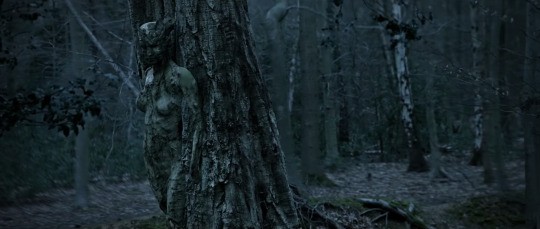
KING ARTHUR is the best type of release when it comes to trailer mashups because 1) it had a fantasy undertone 2) it was tracking poorly and 3) it went way over budget. Big studios know months in advance if they have a major bomb on their hands, and they have two choices at that point: either stop spending a penny on it and dump it for a quick theatre run and VOD release (more common if the movie didn’t cost that much) or, like in this case, spend extra millions of dollars to sell the shit out of that movie on opening week-end before everyone realizes it’s bad. Those extra millions go towards CGI money shots like the one above, which is really meant to make the marketing more attractive and oh dear lord, did KING ARTHUR have some last minute money shots to offer or what? It was a joy to pick and choose from its nine trailers.

This is where I put my cards on the table, whimsy never happened and I am taking you all to creepytown. That shot from ANNABELLE: CREATION is one of the many that upstages the featured evil doll in that wonderful movie and the film’s cinematographer Maxime Alexandre reached out because he was happy so much of his work was featured. You never know in front of who your videos can end up and industry people are keen on celebrating the year in film, especially if their own works are included. This is just a top notch unsettling shot clearly inspired by THE SHINING (the girl’s dress and the way her arms look lifeless.) On a side note, I always manually add all sounds including that floor cracking. If anyone reading this is starting off editing mashups, I promise you one thing: using professional, isolated, studio-recorded sound effect packages such as BOOM library is much superior to the original trailer track (unless you get a clean sound within the trailer.)
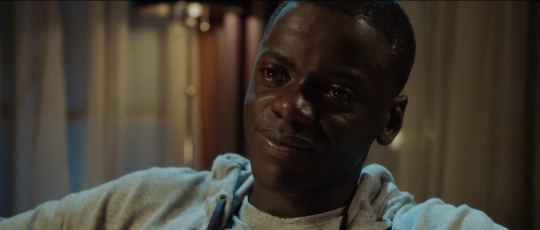
Another random insight (if you’re interested in making your own movie mashups) is to try as much as possible to avoid that one marketing shot everyone recognizes. You can revisit a memorable moment but going straight to the most oversold shot of a film hurts you. While you’re eager to make everyone relive the most epic imagery of the year, some value gets lost when a studio bombarded the same shot over and over and you go for it. Two quick examples: Giant hologram JOI pointing at Ryan Gosling in BLADE RUNNER 2049. I wanted that moment, but the original side-scroller shot was so overused that I went with her from a closer angle (see video thumbnail). Another example is that uncomfortable sniffle from Daniel Kaluuya in GET OUT which I favored over the super overplayed mouth open crying paralyzed shot from every marketing piece. In both cases, I assume you know which shots I am referring to without having to show them. Trying the alternative makes us relive the moment without its obviousness. It gives that other shot they didn’t choose its moment to shine (and more often than not, it’s just as effective.)
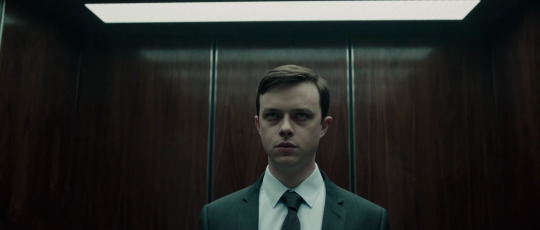
Someone’s not getting much sleep. A CURE FOR WELLNESS is a gorgeous-looking film no matter what you think of its bizarre plot points. I spend much of the first segment flirting with the creative key points from IT. One I tried to play around with is the idea of Pennywise as a half-real/half-fiction monster, and how similar to Wes Craven’s A NIGHTMARE ON ELM STREET his realm of terror extends. A few winning concepts in both films: 1) He isn’t real but he can really hurt you so you have to stay on your guard at all times and 2) Only a select few have been cursed with having to deal with him, adding a psychological layer to an already spooky premise. Dane Dehaan looks like a kid from Derry, or Elm street if you prefer, whose mental focus seems affected by the fact that he saw something, and his friend saw him too. Meanwhile, I throw in a completely out of context quote from Vanessa Redgrave which ties in that mysterious “sickness” from Verbinski’s film.

A shot from PROFESSOR MARSTON AND THE WONDER WOMEN from a trailer edited by Kees van Dijkhuizen Jr. for Annapurna Pictures where he works as an in-house editor now. In 2015, I talked about Gen Ip’s storytelling approach and last year I praised Matt Shapiro’s famously epic crescendos, so this year, let’s talk about Kees a little bit because I find all their influences fascinating. My first observation is how far his much-adored Cinema series has taken him, and that one of the top production houses in the business (if not the top, sorry A24 and Fox Searchlight) hired him so he could bring his own distinct style onto their major features. The whole trailer mashup craze started off only a few years back and so many editors were recruited right off YouTube to turn their passion into a livelihood down in Los Angeles. I can think of at least six editors whose names you’d recognize and who are now living the dream, and I consider this to be really inspiring because none of them initially got into it thinking something like that was ever possible. (side note: I also moved to L.A. and was poached by a trailer house but prefer to keep things on the low-end until it’s been long enough. I wouldn’t want to jinx it.)

The second observation about Kees is how much influence he’s had on every mashup that gets uploaded on a daily basis every December (me included) - I will link his Cinema series below. Instead of pairing clips into a horror bit, an action bit, a laughing and dancing bit, a kissing and crying bit, Kees was always out to create new feelings and nothing ever seemed more important than proper flow. Many shots would pop-up that you would never expect thematically, images of moving objects like a breaking glass transitioned with a girl’s hair waving through the wind (also see the lie detector in the previous shot.) He would connect nature documentaries right along with major superhero blockbusters and the movements flowed so perfectly that nothing ever felt out of place, quite the contrary. He was the best shot curator we’ve ever seen, and the order in which he put them together was beyond logic and predictability. Imagine “One Perfect Shot” but with 275 perfect shots back-to-back. If you want a prime example of what I’m referring to (random objects and flow), check out 2:49 - 2:52 from his Cinema 2011 (links below). Kees set the bar so high that attempting an end-of-year mashup certainly felt foolish at times, but hoping to improve made the editing process all the more inspiring.
CINEMA 2008 | CINEMA 2009 | CINEMA 2010 | CINEMA 2011 | CINEMA 2012
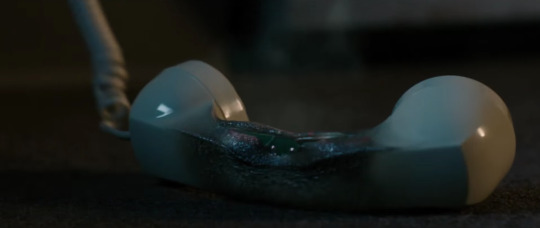
So apparently, they have the internet and flat-screen TV’s in RINGS but landline phones are still a thing. Quite frankly, I haven’t seen RINGS and I bet it’s aggressively ordinary, but how retro horror is that shot? Paired up with the voice of THE SNOWMAN saying “Mister Policeman” it’s a throwback to Nancy being terrorized by Freddy in the original Nightmare of Elm Street (minus the tongue.) I was also pleased with the aesthetic of HAPPY DEATH DAY, clearly the product of horror fans who grew up during the low-budget slasher craze of the early ‘80s. It’s got MY BLOODY VALENTINE written all over it (meanwhile their poster was paying homage to APRIL FOOL’S DAY.) Retro horror, in all its disturbing practical gore glory! Rick Baker, Tom Savini, how much we missed you in our modern times where only a few major productions have enough VFX money to escape the uncanny valley (and even then... *cough* JUSTICE LEAGUE.)

I always tend to edit right on tempo, which means switching shots at the exact moment the music beat tells you to. But over here, I thought this elevator drop from FLATLINERS looked so frenetic and out of control that I started it half a second before as if the beat couldn’t keep up! Like in cartoons when the car accelerates so fast that it takes off but their eyeballs are standing still for a little fraction. This whole mashup sequence is meant to be a little cartoony and tongue-in-cheek. To anyone who found this to be disturbing (and yes, I heard from a few viewers who said it was too much) I must admit that it wasn’t my intention. I won’t apologize for my work, people choose to watch if they want to or not. But if I really tried my best to scare the crap out of you, I can assure you THE LEGO NINJAGO MOVIE wouldn’t have made the cut.

Now channeling a CHILD’S PLAY vibe thanks to this retro television shot from the highly underrated BRIGSBY BEAR. A kids program works well as an element of fear because it’s supposed to be a safely protected zone of positivity and care, just like a doll or a clown for that matter. Once that turns on its head and begins to attack, you basically have nowhere else to hide. It also makes for great contrast, and Andy Muschietti must have had an absolute blast this year incorporating this component into his remake of IT. The bear costume was one of the many shots that wasn’t from a horror movie and yet I used to great effect in this section. I know there was a new CHILD’S PLAY movie this year but sadly, it didn’t hold a candle to the Hitchcockian original.
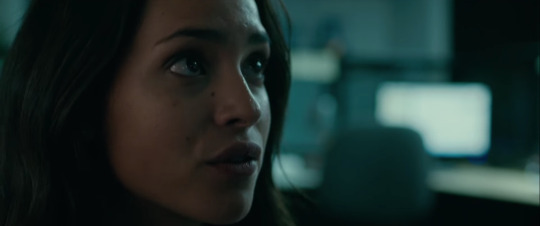
“At the end of the day, people are out for themselves.” That’s not true, and only people who are out for themselves could believe that. Because if you’re weighing low on the morality scale at some point in life, you still wanna go to bed thinking you’re a good person. So if you can’t justify what you did, the best logical next step is to convince yourself that human nature is to blame, that everyone else would have done the same as you. Ask people who were charged with insider trading on the stock market, they’ll always say “everybody was doing it.” I could refer to a certain World War to keep hammering that point but instead, I’d like to point out the interesting contrast between this and Part 3. I try to disprove that very statement by showing in the finale that everything we do that matters is for others, and others are the only thing that matters once everything else has come and gone.
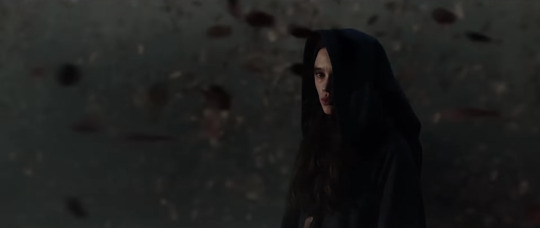
The KING ARTHUR studio spending extra millions of dollars to sell the shit out of that movie on opening week-end before everyone realizes it’s bad money shot festival continues. EPIC! In fact, that shot is so gorgeous, you could place it anywhere in any mashup ever and it would probably work.

Having a bit of fun giving a more literal visual cue to IT’s “We all float down here” with Guillermo Del Toro’s hypnotically beautiful THE SHAPE OF WATER. However, it’s not the tudum tssshh, get it? movie connection that works here. It’s the underwater sound effect and the incredible sound mixing by trailer house Buddha Jones so that Georgie’s voice seems to come from the bottom of the ocean. This is likely the best sound work you’ll hear in the entire mashup, and I didn’t mix it, the editors behind that teaser trailer did. In fact, their work was so effective at scaring people that it earned twice the amount of views on YouTube than what Avengers: Infinity War received. A fact Kevin Feige will likely never admit.

That moment when you realize your manic pixie dream girl wears white socks! NOOOOOOOOOOOOOOOOOOO

I've used vulgarity in the past but not every year, depends whether it brings value. Some of you may remember “Game on, c***suckers” from KICK-ASS 2 in 2013 or “Nap time, motherf***ers” from COOTIES in 2015. Perhaps there’s another guilty pleasure at play here, however, which is that feeling of pure creative freedom. As mentioned earlier, not everyone digged the horror undertone of this year’s Part 1 and that’s okay because it went exactly where I wanted to go and no compromise was made. No client notes. No studio revisions. No censor beeper (which makes it worse because we seek to find out what the word was.) If you get into professional careers that are creative in nature, you’ll find that teamwork, compromise, and not taking anything personally are all essential components for success. But when the movie trailer mashup comes around, I report to no one. And that moment from THREE BILLBOARDS OUTSIDE EBBING MISSOURI is one I wanted included as soon as the red band trailer came out.
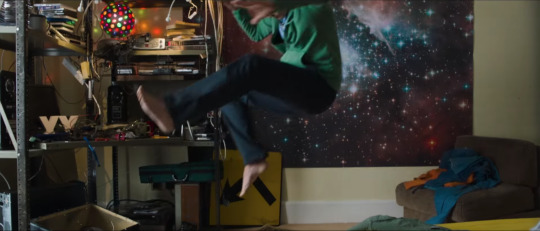
This shot comes from a small movie you should seek out called MY NAME IS EMILY starring Evanna Lynch (aka Luna Lovegood in the Harry Potter movies.) The film was directed by Simon Fitzmaurice who was diagnosed with Motor Neuron Disease (ALS) a few years ago, the debilitating disease for which the viral ice-bucket challenge was based on. He wrote the screenplay for this movie while his body was entirely paralyzed, and the only way he could communicate with the cast and crew while shooting the film was through eye gaze technology. There was a documentary following his brave journey that played Sundance called IT’S NOT YET DARK. Check it out if you need some real work ethic motivation and want to feel truly inspired about overcoming challenges. Much better than THE DISASTER ARTIST which is a spoof about a millionaire with no talent who mistreated the people who worked on his film. Okay, it’s still very entertaining and James Franco is hilarious but I don’t get a ‘never give up’ vibe from it, more like ‘maybe this isn’t for you.’
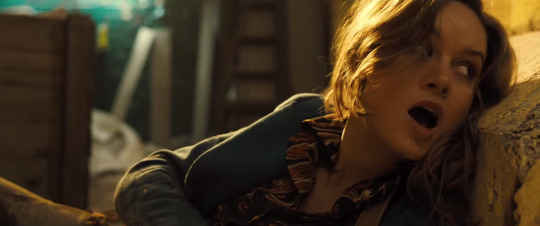
With the second segment, I was going for a British Gangster film vibe, hence the music cue Main Offender by The Hives. No movie captured that feeling better than Ben Wheatley’s FREE FIRE this year. I find the criminals in British movies are equally as clever in their quips as they are dangerous and often have the appearance of fair, well-behaved citizens until they have a reason to go mad. Jon Hamm’s performance in BABY DRIVER was also a textbook definition of that archetype, because all the build-up scenes where he acts friendly and discusses music with the titular character only bring an element of surprise at the end of his arc (spoilers: he’s not that nice in the end) I am aware that BABY DRIVER takes place in America but it’s directed by a Brit so it counts!
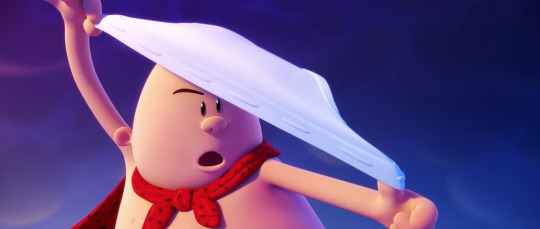
If Kubrick only knew his famous jump cut from 2001: A SPACE ODYSSEY that connects a flying bone to a space shuttle would lead to this fifty years later. What a shit show jump cuts have become! But they’re fun, and let’s be honest here: 7 minutes of serious quotes about life would get a little heavy. The way you edit jump cuts is the same way to solve a puzzle with over a thousand pieces. Extract dozens of short action clips onto your timeline and try to make them fit with one another over and over until you’re entertained. I mean, the music stays the same in the background, all I am doing here is deciding which projectile this pair of underpants from CAPTAIN UNDERPANTS will become. The answer was a tranquilizer from the underground mall chase sequence in Bong Joon-ho’s excellent OKJA. Maybe we should try one really long domino of jump cuts one day. Should take forever to edit, but how much fun would it be?
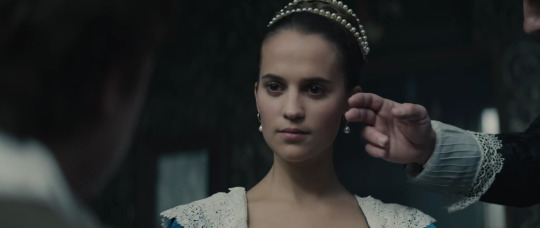
Did you know that Academy Award winner Alicia Vikander was a professional ballet dancer before she started acting? Work ethic applies in everything you do. When you hear about successful actors, you often discover people who are world-class at delivering under pressure and dedicating themselves to their craft with an insane amount of work. Acting is hard and yet so many people think they can do it, which makes it even harder. At least ballet puts constraints right off the bat, you need flexibility and a specific body frame. Part 3 is about finding your passion AND putting in the work. Just finding your passion is hard! It’s not always the bottomless pit one could hope for, especially when it becomes a real job with hours upon hours of work. Many people don’t even know what their passion is, they know what they’re good at but don’t love it. “Without your passion, it’s very hard to find our place in the world.” I don’t think you need your income to come from your passion in order to find said place, but I wish everyone that many of the limited hours they have each day goes towards their passion, and not towards something that feels like a waste of time. Wanting to wake up has everything to do with what happens after your first cup of coffee. Put your time towards something meaningful to you, even if it’s only on evenings and week-ends and you’ll never make a penny from it. If you love animals, volunteer at a shelter. If you love to travel, just GO!
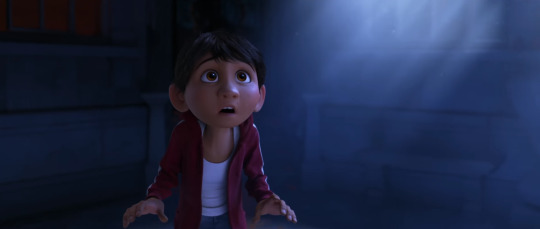
But what happens when your family conflicts with your passion? Would you leave them behind to pursue your dreams? We all remember the tragic scene from DEAD POETS SOCIETY where a young scholar gets forced by his father to become a doctor instead of his passion and commits suicide. And then we have this year’s COCO, Pixar’s big comeback, where music is prohibited in Miguel’s family but it’s all he dreams about. But that conundrum doesn’t even have to be confrontational in nature. What if you wanted to work in a low-paying field like online journalism because it’s what you love but your single parent (who always took care of you) became sick and needed you to take care of their treatment. What happens then? What comes first? I humbly try to answer that later in the segment, of course.

We always told you Daniel Radcliffe... you’re special. That’s why you have a scar on your forehead that looks like a bolt... Just kidding, poor guy. I look at Mark Hamill in THE LAST JEDI and keep thinking that if studios are still a private enterprise in 40 years, some new Harry Potter movie will come out in which an old bearded Radcliffe will be teaching at Hogwarts. (PS: he keeps making bold choices, so much so that I am willing to watch anything he’s in.)
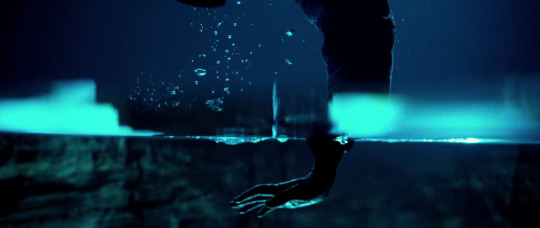
A man’s reach... (or woman, btw) should exceed his/her grasp. Words from a poem by Robert Browning, suggesting that, to achieve anything worthwhile, a person should attempt even those things that may turn out to be impossible. The downside with attempting the impossible is two-fold, however. 1) You may spend your life trying and never succeed. 2) If you do get there after so much sacrifice and effort, the world will expect you to do it again, or to keep doing it at the same level or better. If you won a Gold medal at the last Olympics, what are the expectations for the upcoming Olympics? That’s where passions and dreams enter a darker road, one many people choose to avoid altogether. But whatever happens, it’s worth the risk as long as you have the one thing along the way that’s a hundred times more important. And that thing is...
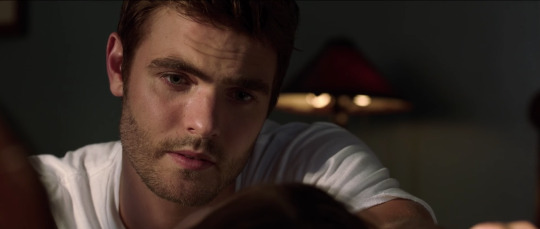
...people who love each other! Look at this guy, he just figured it out!
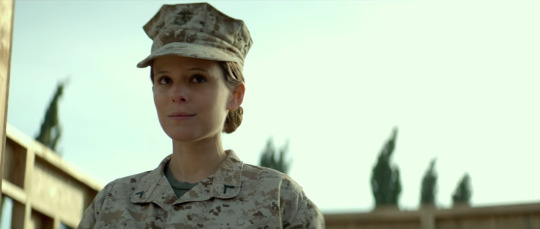
Kate Mara in MEGAN LEAVEY really seems to be the one thinking out loud in this shot while we hear a quote from THEIR FINEST. I had a blast with the Freddy Krueger references earlier but this is my favorite part. Audiomachine make the best tracks to bring that crescendo to its proper peak. You can say this part of the mashup is more in my comfort zone. And the influences from Kees that I discussed earlier can be felt here. Some shots of objects and landscapes that aren’t thematically connected but keep a nice flow. I also handpicked the best cinematography of the year all at once here. MURDER ON THE ORIENT EXPRESS was a damn pretty movie, then SHAPE OF WATER, then THE MAN WHO INVENTED CHRISTMAS, then OKJA. Every shot looks like a million bucks. Notice the use of paper, letters and ink. I want to see you again, a character from EVERYTHING EVERYTHING writes on a sheet.

Family comes first is nice, but along with family comes conflict and distance at times. Things we said that we regret. Times we let each other down, or weren’t there when we needed to. All the papers dropping from the bridge, all the shots that refer to letter writing, that’s where I was going with that. Not always obvious because it moves so damn fast which is why I do this deconstruction blog post every year!
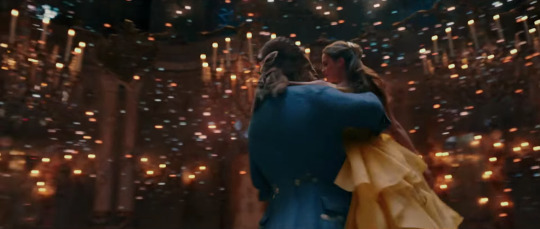
The final big lift from Disney’s BEAUTY AND THE BEAST! Also, the first frame I added onto my AVID timeline. This is how I organize my work basically. I pick the right songs, then I identify the exact moments in that song where a big moment should happen - if you use trailer music, it will be crystal clear what those are. And then I try money shots in each of these spots over and over until one really, really fits. Then, I ask myself how did we get here, how can I get to that point? And build around these big moments. The second shot I added into the mashup was the little girl in Part 1 under the bed who points to another version of herself sleeping in her bed and says “Shhh! That’s not me.” I put that in right when the music stopped, it became a big moment, and then I built around it in order to get there. Every editor works differently, but I am just sharing how I personally prefer to do it. Back in 2012, the first clip I added onto the timeline was “I have an army. We have a Hulk.” from THE AVENGERS which means I’ve been editing this way for five straight years.

Those letters of reaching out to people you care about. Apologies or wondering how they’re doing. Flying everywhere around Winston Churchill (that’s my dog’s name, he’s a Pembroke Welsh Corgi!) I guess you should always be the one to reach out in difficult situations with important people. The mistake is to not reach out, or convince yourself that they were dragging you down and you’re better off without them. That’s rarely the case, and you’ll never get over them when you know that’s not the case. Maybe they will reply someday, maybe they never will. But you swallowed your ego and you decided to give it one more shot. That’s the bravest thing we can do in this life, and I hope you’ll see it that way if the time comes. Happy New Year! Achieve your passions, take care of the ones you love and make it a wonderful day! (Halle Berry: “Aaaarrh!")
- Sleepy Skunk
10 notes
·
View notes
Text
Do I Look Like That?: Bitmojis and Perspectivism
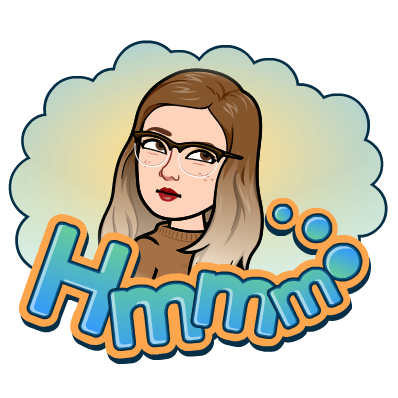
By Tori Serpico -
The Bitmoji app, launched in 2013, is massively popular and has seemingly ever-growing success. The app allows users to create cartoon versions of themselves, which then are placed into hundreds of small animated photos, or “stickers,” that can represent nearly any mood or situation that you can then send through text -- all integrated into your phone’s keyboard. In the early days of Bitmoji, the app’s avatar customization was sparse. Should my Bitmoji be fully blonde or fully brunette? What skin tone is just right? Would I even wear that outfit? After spending too long attempting to answer these questions and make a Bitmoji to capture my essence I showed it to my sister. She looked at it, and then at me, and then back at it, and said: “That doesn’t look like you.”
This was a disappointing response. I handed her my phone and let her give it a try. She would periodically examine my face or ask me to turn my head. “Done!” She handed me back my phone. It didn’t look like me.
While what I am describing is truly a first world problem, there is an underlying question that reaches far beyond the Bitmoji: how can we truly capture the self?
To begin, we must consider the factor of perspective from someone who has explored this in depth. Let’s look backward to discover what historian and theorist Jane Tompkins, has already explored this topic of seeing the self through varying representations (Pifko). Tompkins, in her essay "’Indians’: Textualism, Morality, and the Problem of History,” describes the trouble she faces in attempting to piece together the encounters between the Europeans settlers and the Native Americans. Throughout her research, she discovers massive disparities in information as she reads varying accounts of what should be the same experience. This is troublesome to her, as clearly there is only one true history. However, these inconsistent records suggest otherwise. Due to this frustration, Tompkins concludes that the nature of facts, or of truth, is that although there is only be one base truth in the context of any given situation, due to the external human factor of perspective, multiple truths exist. As seen through Tompkins’ essay, this concept of perspectivism, or the idea that truth is inherently muddied by point-of-view, is closely aligned with understanding historical events. But I can’t help but wonder, what role does perspectivism play in an examination of the self?
The Bitmoji conundrum I described serves as an instance of perspectivist self-examination. When noting the disparity between the Bitmoji I created for myself and the Bitmoji my sister made for me, the differences were slight. A wider nose, a longer face, a few freckles.
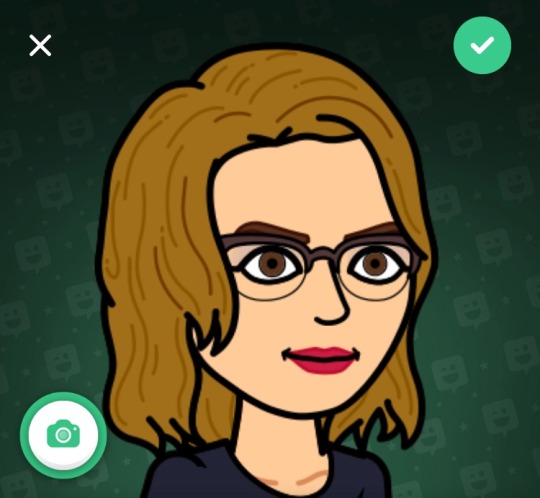

But I was bothered by these small details that I failed to recognize in myself that were so simple for someone else to identify. Which was more accurate? Should I trust an outside eye’s perspective of my physical appearance because it is inherently less biased? Or is my own recreation of myself more true, as I am the self I am attempting to capture? And where do these two selves intertwine? If we view these questions through Tompkins perspectivist lens, then even "...if the accounts don't fit together neatly, that is not a reason for rejecting them all… one encounters contradictory facts and divergent points of view in practically every phase of life” (Tompkins 118). By the logic of perspectivist theory, there is no one true self to capture because each perspective provides a new insight. Therefore, I am all of my failed Bitmoji attempts. Yikes.
The belief that the self is a collective idea as opposed to a static being is not new. In fact, it’s almost three hundred years old. David Hume, a skeptic Enlightenment philosopher discusses his views on the permanency of self in “A Treatise of Human Nature.” Hume writes: “I may venture to affirm of the rest of mankind, that they are nothing but a bundle or collection of different perceptions, which succeed each other with an inconceivable rapidity, and are in a perpetual flux and movement” (134). This is known as the Bundle Theory. What this theory is arguing is that the self ever-evolving concept as it is constantly the object of others’ perspectives. These perspectives are so varied and so frequent that it is impossible to claim that one’s identity is singular-- it is only within our minds that we prescribe oneness to self. In this way, the Bundle Theory is inherently perspectivist. There cannot possibly be one true self if that self is being constantly externally perceived.
So who are we, if we are not who we think we are? To attempt to answer that question, let’s get back to basics: we are all human beings that possess human features and qualities. Now identifying these qualities is what creates implications that illuminate our perceptions of ourselves, ultimately aiding in others perceiving us. For example, my hair was once both brown and purple. At this time, Bitmoji did not have the option of multiple hair colors, meaning I had to choose between the two in order to best represent myself.


These hair colors are “signifiers,” or physical representations of greater meaning, or the “signified.” If I consider this post-structurally, as Tompkins would, these signifiers create a multitude of meanings that then contribute to larger structures of culture and identity. As I chose between two coexisting signifiers, I was deciding between selves. My choice would ultimately force me to perpetuate an idea of myself that was not entirely physically true. The implication then becomes that I view myself in a way which is inherently inaccurate. We all possess our signifiers, but the deliberate nature of the creation of a Bitmoji places a pressure upon the user to have a heightened understanding of them.
This pressure to have an accurate Bitmoji exists for several reasons. As its popularity has grown, the app has been integrated into a multitude of other popular social media apps, such as Snapchat and Tinder. Now instead of our “real” faces being plastered onto profiles, it’s our recreations of ourselves. Why is this preferable? I feel the aspect of control over our signifiers is something that society has striven for. Through the lens of the Bundle Theory, this is entirely impossible in reality. We are constantly being captured by various perspectives that we have little to no control over, no matter how much effort we put into physical appearances. The ability to capture the preferable, to show what we want to be seen, is a widely accepted part of social media culture. Bitmojis indirectly caricature our inclinations towards either embracing or rejecting this culture simply through the choices we make in attempting to recreate ourselves.
This is not to say that Bitmojis cannot be true to self or to say that Bitmojis deemed to be misrepresentative of their subject are done so purposefully. As I described, there is a margin of inaccuracy due purely to the lack of signifiers to choose from within the app. However, Bitmoji has become aware of this and has since released a game-changing update that drastically increased the accuracy of the recreation of the self: Bitmoji Deluxe. Bitmoji Deluxe offers such specificity in its signifiers that the pressure to have a true-to-self Bitmoji has not been relieved-- it has been heightened. In her essay “Thanks to Bitmoji Deluxe, my Bitmoji now gives me anxiety,” Stolyer expresses exactly what her title implies. The increased realism of the update caused Stolyer to “question physical looks [she has] never noticed before,” and described her “experience with the new feature [to be] filled with(…) anxiety.” While I cannot assume that this is a universal experience, this account clearly illuminates my point. Bitmoji is a new form of virtual identity that requires users to constantly be in a state of self-examination.
And for the reasons I have already discussed, self-examination is not a simple task. If I am truly just a bundle of selves or a collection of contradicting perspectives, then how can my Bitmoji ever really look like me? I posed the question: “how can we truly capture the self?”-- a question worth my exploration, and a question I wish I could answer within the confines of these closing thoughts. The only sentiment I can confidently leave you with is that we cannot allow philosophy to rob us of the existence of something as simple as physical appearance, as tempting as it may be. Truth and self still exist, just not in the ways that we think they do. Tompkins says it herself: “bringing perspectivism to bear in this way on any subject matter [has] a similar effect; everything is wiped out and you are left with nothing but a single idea-- perspectivism itself” (Tompkins 117). Perspectivism gives us the ability to diminish almost any truth, whether it be historical or personal. In my opinion, understanding the complexities of self is not an excuse to reject the self altogether and make your Bitmoji look like a big fat purple dragon. We are difficult to define, we are not intrinsically indefinable. As we must in any undertaking, in attempts to capture the self we must make decisions-- decisions formed by accepted facts. I will always have brown eyes-- and even if they may look hazel in a certain light, or if an unknown onlooker mistakes them for blue-- they will always be brown. We must take perspectivism with a grain of salt, and acknowledge that while truth exists in layers, there is always a foundation. So let’s use Bitmoji responsibly, with the understanding that even though we are victims of perspective, ultimately our own perspectives of ourselves should rise victorious. But first, be honest: does this look like me?


Acknowledgments
For my mom and my sister, who love my Bitmoji no matter what it looks like!
Works Cited
Hume, David. “Of Personal Identity.” A Treatise of Human Nature, 1738, pp. 133–139.
Pifko, Matthew. Class workshop. 15 November 2018.
Stolyar, Brenda. “Thanks to Bitmoji Deluxe, My Bitmoji Now Gives Me Anxiety.” Digital
Trends, Digital Trends, 1 Mar. 2018,
www.digitaltrends.com/features/my-bitmoji-gives-me-anxiety/.
Tompkins, Jane. “‘Indians’: Textualism, Morality, and the Problem of History.” Critical Inquiry,
vol. 13, no. 1, 1986, pp. 101–119., JSTOR,
www.umsl.edu/~alexanderjm/IndiansbyTompkins.pdf.
0 notes
Text
Smart Data Visualizations: Quality Assessment Algorithm
The gap between a bad and good data visualization is small.
The gap between a good and great data visualization is a vast chasm!
The challenge is that we, and our HiPPOs, bring opinions and feelings and our perceptions of what will go viral to the conversation. This is entirely counter productive to distinguishing between bad, good, and great.
What we need instead is a rock solid understanding of the updraft we face in our quest for greatness, and a standard framework that can help us dispassionately assess quality.
Let’s do that today. Learn how to seperate bad from good and good from great, and do so using examples that we can all relate to instantly.
We’ll start by looking at the two sets of humans who are at the root of the conflict of obsessions and then learn to assess how effective any data visualization is in an entirely new way. If you adopt it, I guarantee the impact on your work will be transformative.
The Conflict of Obsessions.
There are two parties involved in any data visualization.
1. Analyst/Data Visualizer.
As I’ve passionately shared frequently on this blog, we, Analysts, are all in the business of persuasion. We work against that desired outcome because when we work on creating a data visualization, here are our top-of-mind concerns/desires/perspectives:
How can I cram as much as I can into the graphic?
What can I include to ensure everyone clearly gets just how much work I did?
How much of my agenda do I need to make overt, and how much can I make covert?
Is there something I can add to increase the chances that this will go viral and result in fame and glory?
Ok. I’m only teasing.
But, as an Analyst, a Data Visualizer, I can’t say that these thoughts don’t cross my mind. :)
I’m sharing the above primarily to ensure that you know these motivations exist – and, like me, you should try to fight and resist!
The very best Data Visualizers, obsess about:
1. known and unknown variables
2. causality
3. nuance
4. visualization techniques
5. rank-ordering messages
6. simplicity, simplicity, simplicity, simplicity, simplicity, simplicity, and, just to be safe one last time, simplicity.
These are the six things that matter supremely in my work, and they should be what matter in yours.
Simplicity matters more than the rest because if I can’t distill complexity, I might as well not do the work because that is only a snowball’s chance on the sun that the audience will understand my complex visual.
Let’s look at the other set of humans involved in a data visualization equation.
2. Data Consumer.
Here are the concerns/desires/perspectives that a consumer of data visualizations has top of mind when they are presented with a set of analysis:
What’s in it for me?
How easy is it to grasp the most important point?
What’s in it for me?
How much effort do I need to put in to understand the whole infographic?
What’s in it for me?
How can I trust that this message is from a credible Analyst/source/using sound methodology?
(Never underestimate the staggering selfishness that a Data Consumer brings with them to the table when you are showing them a table of data or a data visual. And, it is understandable because they have difficult jobs and 71 other things to worry about.)
Notice there is very little overlap between the obsessions of the Data Consumer and Data Visualizer.
If you have a choice (and you do!), let the needs of the Data Consumer drive your data visualization efforts. The only exception is when you are trying to push propaganda, then go with your agenda.
If an infographic sucks, it is usually due to the conflict between the Visualizer and the Consumer along the above dimensions.
You’ll see it vividly on display when you look at any graphic through the Consumer lens with an eye on simplicity (the Analyst dimension).
The Data Visualization Assessment Algorithm.
Algorithm might perhaps be a tad bit pompous, as applied here. I’ve developed a set of filters and lenses through which you can look at any data visualization in order to quickly assess quality.
Perhaps someone reading this blog post is going to help us all out by building a Machine Learning algorithm to assess if a Data Viz is bad, good, or great. :)
Reflecting on the aforementioned Consumer vs. Visualizer conflict of obsessions has helped me distill the evaluation of data visualizations to eight dimensions. They influence each other and the entire portfolio, yet they stand on their own.
In the format of “Obsession | [ratings scale],” here’s the data viz assessment algorithm:
1. Time to the most important insight. [Scale: Fast. Slow. KMN!]
2. The effort to understand the whole graphic. [Low. Medium. No Thank You.]
3. Trust marks. [Clear. Non-Obvious. None.]
4. Rank-ordering of key messages. [Yes. Partial. WTH!]
5. Explaining the key logic powering the graphic. [Super clear. Cloudy. Invisible.]
6. Exposing nuance. [Sweet. Some. Sour.]
7. Visualizer trying to be too clever. [No, and thank god. Yes, but it is harmless. Yes, sadly.]
8. Likely to recommend to influential leaders. [Yes! No. No way.]
I want you to explicitly notice:
I’ve put the Data Consumer first
Incentivized good behavior by the Data Visualizers, and …
… Included an outcome in the end because activity is well and dandy but it is outcomes are what matter.
My hope is to share a very specific algorithm that gets your critical thinking juices flowing. I invite your critique and suggestions on how I can make it even smarter. Please reply.
The best way to learn is to practice via real-world examples. So.. Let’s do that!
COVID What Should I be Afraid of (!) Data Visualizations.
A few weeks ago, perhaps not coincidentally, a number of different entities published visuals to help us understand what we can do safely and what’ll cause grievous harm.
I’ve collected four of these efforts – each a really different way to visualize nearly identical information. This gives us an ideal data set to apply our algorithm, and learn discerning skills along the way.
Data Visualization #1
The first graphic is from the inimitable Randall Munroe (I’m a very big xkcd fan!).
Randall has a unique way to communicate complex information (buy Thing Explainer!), and this graphic is no different. It combines seriousness, fun, and scientific accuracy.
As an approach, 2x2s work really well. They force simplicity. The color clustering above helps, you can jump to the safest or riskiest activities faster.
On the downside, it is hard to take in the whole thing. You can get lost.
I’m treating this as a very serious example, but it is important to remember that the intent above includes the goal of making us smile.
Let’s apply our algorithm and see how this graphic does with our tough, but with love, lens.
1. Time to the most important insight. [Fast. Slow. KMN!]
2. The effort to understand the whole graphic. [Low. Medium. No Thank You.]
3. Trust marks. [Clear. Non-Obvious. None.]
4. Rank-ordering of key messages. [Yes. Partial. WTH!]
5. Explaining the key logic powering the graphic. [Super clear. Cloudy. Invisible.]
6. Exposing nuance. [Sweet. Some. Sour.]
7. Visualizer trying to be too clever. [No, and thank god. Yes, but it is harmless. Yes, sadly.]
8. Likely to recommend to influential leaders. [Yes! No. No way.]
The graphic should technically get a pass on #3 as it is for fun, and possibly #5 as well. But, I’ve still graded it seriously so that all of us can practice scoring.
If the phrase big miss applies here it is perhaps #2, the effort to understand the whole graphic (or more precisely, cartoon).
Based on the algorithm’s assessment, it earns a score of 23/66.
Oh, I totally forgot to tell you… I made a little scoring system to help you truly internalize the key messages. Those who know me will not be surprised that my system has a steep grading curve (#highstandardsFTW!).
The scoring system uses a multiplier across each rating in the scale above. Additionally, since each dimension does not carry the same level of importance, there’s a multiplier for each dimension – to effectively communicate my values.
Here’s the math…
It is all fun and games until you realize there’s a score involved! :)
Important: My intent in creating the data viz assessment algorithm, and scoring sheet, is not to have you entirely agree with how I’m grading each visualization. My intent is to teach a systematic approach you can bring to these difficult and complex tasks.
I do hope you see why I’m scoring the way I am, I hope you’ll agree. But, that desire is tertiary.
Data Visualization #2
The second graphic is from the world-famous Information is Beautiful (IiB). They have some of the world’s most famous data visualizations. (The simple and effective: When Sea Levels Attack)
IiB tends to make graphics for large screens, I need to be on my beloved 27” ThinkVision monitor to read it optimally.
In this instance, you’ll notice the color palette works against the ability to read the text (teal on dark gray or slightly lighter gray on dark gray).
The spectrum from light yellow to blood red of the circles, with internal gradations, is trying to add a layer of cleverness that possibly satiates a Data Visualizer, at the cost of the Data Consumer.
Once you zoom into one part of the visual, things become readable. You do lose the full picture of any section. In this view, perhaps you’ll agree that there is a sense of randomness to what’s in the bubble (check for this in the two visuals below as well).
It was a lovely touch to add the “risk factors to consider” on the top left of the visualization which explains the logic powering the graphic.. (You can see it more clearly in the higher resolution view, the blue font on gray makes it hard above.)
I do like the subtle helpful tips like the one about condiments, below.
Let’s apply our algorithm and see how this graphic does with our tough, but with love, lens:
1. Time to the most important insight. [Fast. Slow. KMN!]
2. The effort to understand the whole graphic. [Low. Medium. No Thank You.]
3. Trust marks. [Clear. Non-Obvious. None.]
4. Rank-ordering of key messages. [Yes. Partial. WTH!]
5. Explaining the key logic powering the graphic. [Super clear. Cloudy. Invisible.]
6. Exposing nuance. [Sweet. Some. Sour.]
7. Visualizer trying to be too clever. [No, and thank god. Yes, but it is harmless. Yes, sadly.]
8. Likely to recommend to influential leaders. [Yes! No. No way.]
I was this close to choosing no way in terms of recommending this graphic to others (because I never will). In the end, IiB is such a huge entity and so famous and so many people love them… no way seemed too much against the grain.
I've come to understand that IiB has a very specific design language, texture, and philosophy that has come to define them. It possibly acts as a constraint now.
Based on the algorithm’s assessment, it earns a score of 7/66.
Here’s the math:
It is important that data this critical – for this wide a consumption (whole planet) – needs to figure out how to hit an extraordinarily high simplicity and effective comms standard. Else, it remains an exercise in self-satisfaction by the Data Visualizer.
Data Visualization #3
The third graphic is by Professor Saskia Popescu, Dr. James P. Phillips, and Dr. Ezekiel Emanuel.
I’m a huge fan of Dr. Emanuel. He was the special advisor for health policy in the Obama administration and played an instrumental role in passing the Patient Protection and Affordable Care Act (aka. Obamacare). For this, he has my eternal gratitude on behalf of those who society and politicians don’t usually listen to in the United States.
The Covid-19 Risk Index clearly identifies the logic powering the graphic: enclosed space, crowds, duration of interaction, and forceful exhalation.
Note that IiB also had some of these factors, forceful exhalation is an addition here (unsurprising that the doctors brought that to the fore).
The colors in the graphic are related to the intensity of the risk, green is low and red is high. Simple, direct, effective.
I’m not a huge fan of a giant company logo on graphics as you see below in the "hexagon art." I believe: More white space = more peace.
Given the heartbreaking debate in the US, I did appreciate the bonus call to action up top to wear a mask.
Did you notice the trust marks at the bottom? Really nice.
As in the case with the IiB graphic, this one is meant for the large screen display. I applaud the team for making sure each segment is readable – no fancy font colors and fancy background as a demonstration of the Visualizer's smartness.
Folks in my teams know I hold a special hatred for icons. They add clutter. In this case, I do support the decision to include icons.
For example, without needing to read any text I know that working in the office carries medium/high risk, and participating in group religious services is in the recommend you please avoid category – even in the small version above and certainly in the zoomed-in version below.
Let’s apply our algorithm and see how this graphic does with our tough, but with love, lens.
1. Time to the most important insight. [Fast. Slow. KMN!]
2. The effort to understand the whole graphic. [Low. Medium. No Thank You.]
3. Trust marks. [Clear. Non-Obvious. None.]
4. Rank-ordering of key messages. [Yes. Partial. WTH!]
5. Explaining the key logic powering the graphic. [Super clear. Cloudy. Invisible.]
6. Exposing nuance. [Sweet. Some. Sour.]
7. Visualizer trying to be too clever. [No, and thank god. Yes, but it is harmless. Yes, sadly.]
8. Likely to recommend to influential leaders. [Yes! No. No way.]
This graphic went viral on the socials, and deservedly so. With CV-19 flaring up in multiple countries (sadly, we in the US are still making our way through wave one), I hope that you will use the graphic above to stay safe – and share it with your friends and family so that they can stay safe as well.
Based on the algorithm’s assessment, it earns a score of 50/66.
Here’s the math:
Clearly a graphic the Data Visualizer can be proud of, reaching a level of obsessions overlap with Data Consumer obsessions that is rare.
Data Visualization #4
The last graphic was developed by the physicians on the Texas Medical Association COVID-19 Task Force and TMA Committee on Infectious Diseases.
I love it.
It is simple. It is easy to digest. There is absolutely nothing cute about it (hurrah!). There are no circles to jump through. No expensive Data Visualizer Specialist In Fonts was hired. The graphic is not trying too hard.
It was probably designed by the Doctors in TMA. It is insanely boring. All it is is… Effective.
Just about the only lite criticism I can make is that perhaps in keeping with the (ironically) liberal posture of the state of Texas when it comes to dealing with Covid, this graphic lowers the bar for what’s risky compared to all other sources. I share that as a small red flag, but it is adjacent to the technical analysis of the data viz that we are undertaking today.
The logic powering the graphic is integrated into the core of the graphic, as becomes clear below. There is little to no effort necessary to understand the visual. Start at the top, keep going. The colors and bars help you along.
Even in this small size, it is fairly readable…
When information is laid out so clearly other things jump out at you that makes you think (an excellent trait of a great data visualization).
All of the below items are an 8 or a 9 – but consider the staggering differences.
Attending a bar is just as risky as a religious service with 500+ worshipers! And, both are a tiny bit riskier than eating a buffet!! You were leaned-in questioning the data, being curious. A good sign.
Let’s apply our algorithm and see how this graphic does with our tough, but with love lens:
1. Time to the most important insight. [Fast. Slow. KMN!]
2. The effort to understand the whole graphic. [Low. Medium. No Thank You.]
3. Trust marks. [Clear. Non-Obvious. None.]
4. Rank-ordering of key messages. [Yes. Partial. WTH!]
5. Explaining the key logic powering the graphic. [Super clear. Cloudy. Invisible.]
6. Exposing nuance. [Sweet. Some. Sour.]
7. Visualizer trying to be too clever. [No, and thank god. Yes, but it is harmless. Yes, sadly.]
8. Likely to recommend to influential leaders. [Yes! No. No way.]
Based on the algorithm’s assessment, it earns a score of 64/66.
Here’s the math:
The TMA graphic was the spark to write this newsletter.
The world needed a simple way to communicate effectively, in this case literally, information that can save lives.
While things are rarely that high-stakes in a business environment, I hope the TMA inspires you to ensure that you don’t lose sight of what’s important when you work on data visualizations: The understanding of data.
Bottom line.
How do you handle the conflict between your goals as a Data Visualizer (and incentives your employer creates for you) and the Data Consumer? While the answer seems obvious, it is incredibly difficult to execute. I hope you’ll use the data visualization assessment to ensure you, your team, solve for the Data Consumer first, yourself second.
If you have graphics that score above 60, I would love to see them! (If they are shareable.)
All the best.
PS: Bonus Life Lesson:
A small number would surely have noticed that the perfect score from the algorithm is 66 (all Great), and the score for it was good enough is 22 (all Could Be Optimized). That massive chasm reflects life (and my philosophy).
There are thousands of Analysts who’ll stop at good, after all it is good. Perhaps a hundred, or less, will do the hard work required to get to great. They’ll rule the (biz) world.
#nowyouknow
The post Smart Data Visualizations: Quality Assessment Algorithm appeared first on Occam's Razor by Avinash Kaushik.
from Occam's Razor by Avinash Kaushik https://ift.tt/34ZjDjl
#Digital #Analytics #Website
0 notes